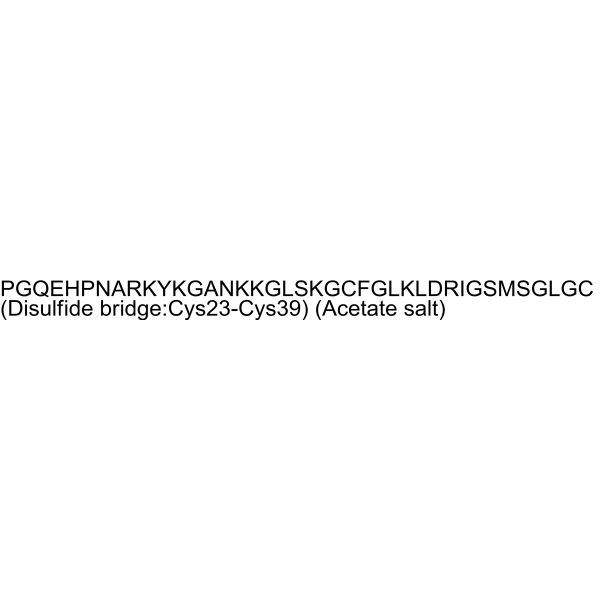FGFR
FGFRs (fibroblast growth factor receptors) are transmembrane tyrosine kinase receptor. It is involved in carcinogenesis and plays an important role in cell differentiation, survival and proliferation etc.
Products for FGFR
- Cat.No. Product Name Information
-
GC62291
(Z)-Orantinib
(Z)-Orantinib ((Z)-SU6668) is a potent, selective, orally active and ATP competitive inhibitor of Flk‐1/KDR, PDGFRβ, and FGFR1, with IC50s of 2.1, 0.008, and 1.2 ?M, respectively. (Z)-Orantinib is a potent antiangiogenic and antitumor agent that induces regression of established tumors.

-
GC33519
2,5-Dihydroxybenzoic acid
A benzoic acid with diverse biological activities
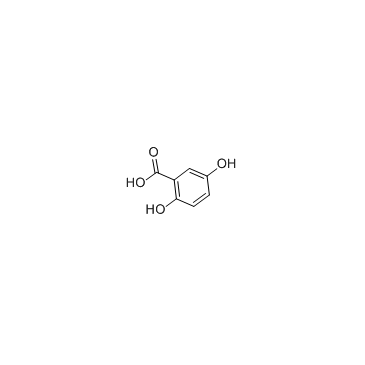
-
GC15801
ACTB-1003
ACTB-1003 (ACTB-1003) is an oral kinase inhibitor with IC50s of 6, 2 and 4 nM for FGFR1, VEGFR2 and Tie-2.

-
GC32127
Alofanib (RPT835)
Alofanib (RPT835) (RPT835) is a potent and selective allosteric inhibitor of fibroblast growth factor receptor 2 (FGFR2).

-
GC17283
AP26113
AP26113 (Brigatinib analog) is a potent and selective active inhibitor of anaplastic lymphoma kinase(ALK), Patent US20140066406 A1.
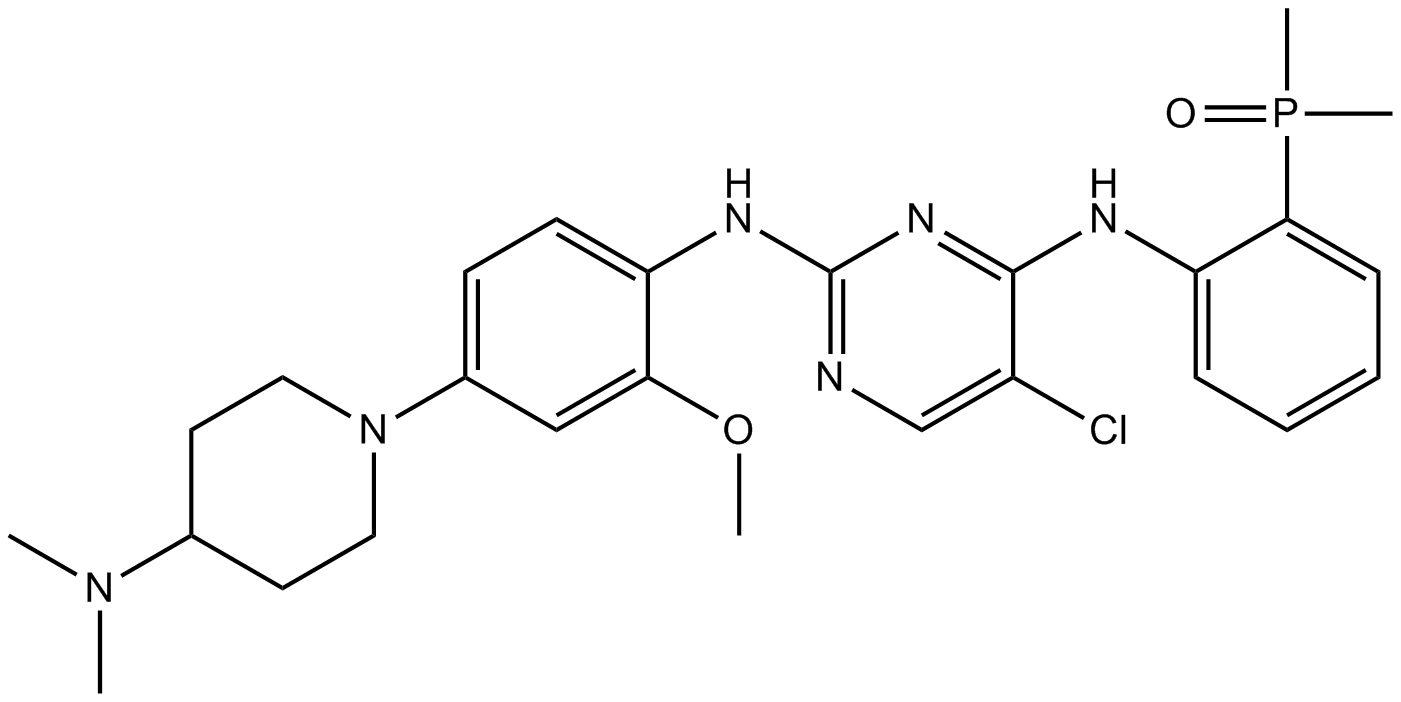
-
GC65515
Aprutumab
Aprutumab?(BAY 1179470) is a fully human FGFR2 monoclonal antibody, which binds to the FGFR2 isoforms FGFR2-IIIb and FGFR2-IIIc. Aprutumab has?the?potential?for?solid tumors research.
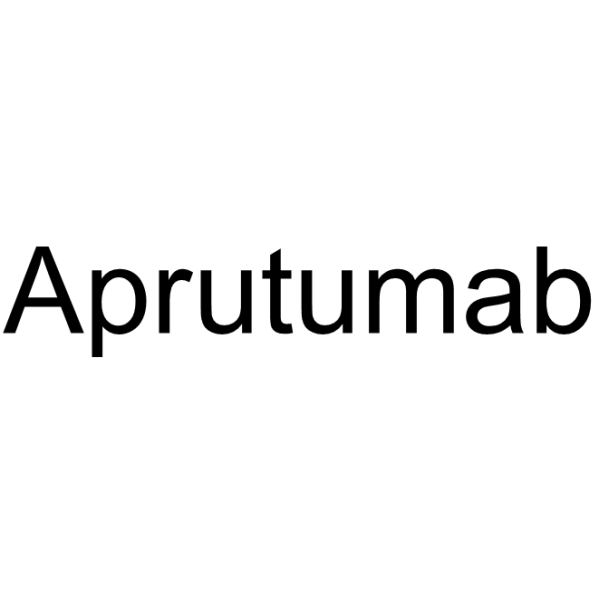
-
GC34476
ASP5878
ASP5878 is an oral active inhibitor of FGFR 1, 2, 3, and 4, with IC50 values of 0.47 nM, 0.6 nM, 0.74 nM and 3.5 nM for FGFR 1, 2, 3, and 4 kinase activity. ASP5878 has potential antineoplastic activity.
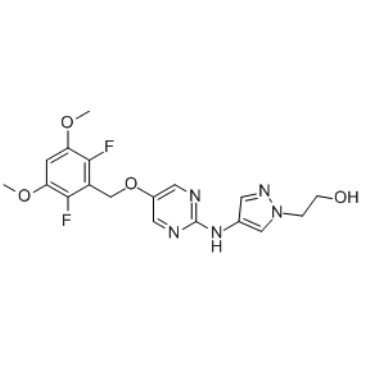
-
GC14005
AZD4547
FGFR inhibitor
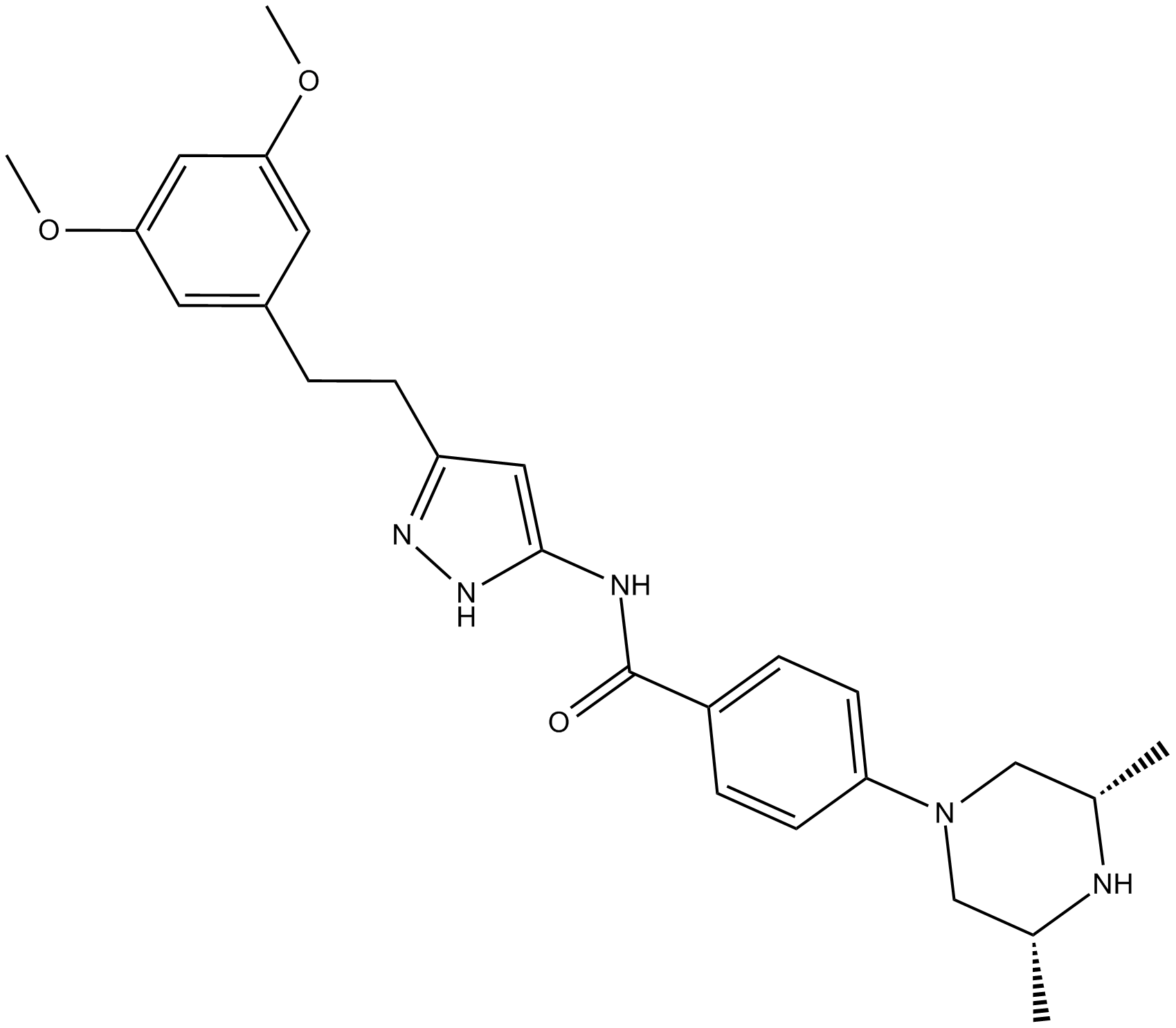
-
GC65516
Bemarituzumab
Bemarituzumab is a first-in-class, humanized IgG1 monoclonal antibody against FGFR2b (a FGF receptor). Bemarituzumab blocks fibroblast growth factors from binding and activating FGFR2b. Bemarituzumab has the potential for cancer research.

-
GC10055
BGJ398
An FGFR inhibitor
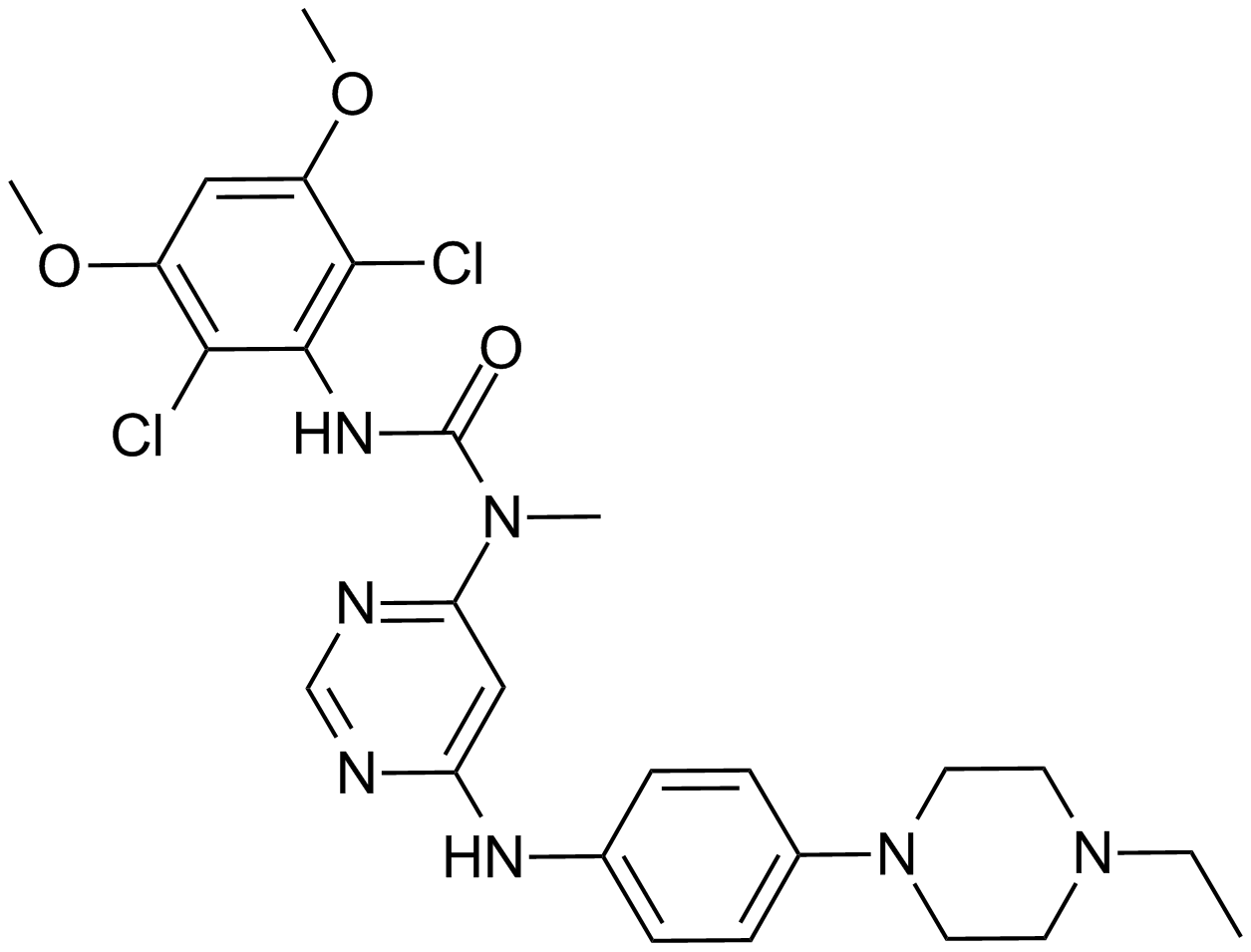
-
GC19075
BLU-554
BLU-554 (BLU-554) is a potent, highly selective and orally active fibroblast growth factor receptor 4 (FGFR4) inhibitor with an IC50 of 5 nM. BLU-554 has significant anti-tumor activity in models of hepatocellular carcinoma (HCC) that are dependent on FGFR4 signalling.

-
GC10833
BLU9931
FGFR4 inhibitor,potent and irreversible

-
GC10759
CH5183284 (Debio-1347)
CH5183284 (Debio-1347) (Debio 1347) is an orally available and selective FGFR inhibitor with IC50s of 9.3, 7.6, and 22 nM for FGFR1, FGFR2, FGFR3, and FGFR4, respectively.

-
GC33352
CP-547632
A potent inhibitor of VEGFR2 and bFGF
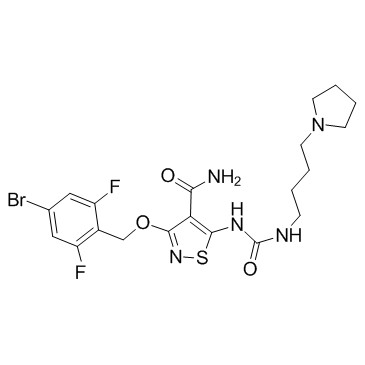
-
GC38575
CP-547632 hydrochloride
CP-547632 hydrochloride is an orally active, ATP-competitive and potent VEGFR-2 and FGF kinases inhibitor with IC50s of 11 nM and 9 nM, respectively. CP-547632 hydrochloride is selective for VEGFR2 and bFGF over EGFR, PDGFRβ, and related tyrosine kinases (TKs). CP-547632 hydrochloride has antitumor efficacy.
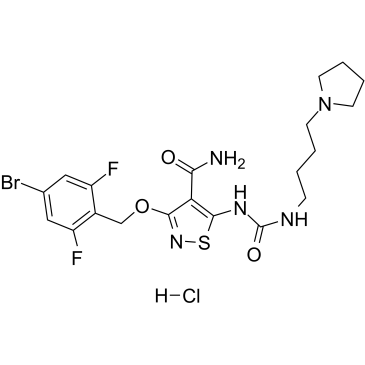
-
GC60726
CP-547632 TFA
CP-547632 TFA is an orally active, ATP-competitive and potent VEGFR-2 and FGF kinases inhibitor with IC50s of 11 nM and 9 nM, respectively. CP-547632 TFA is selective for VEGFR2 and bFGF over EGFR, PDGFRβ, and related tyrosine kinases (TKs). CP-547632 TFA has antitumor efficacy.
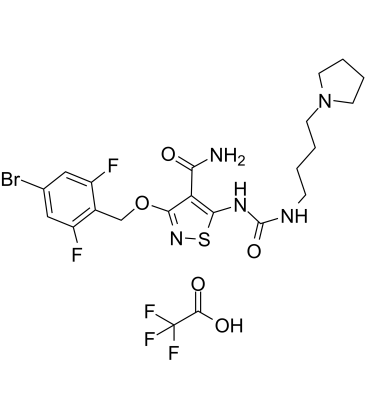
-
GC62274
CPL304110
CPL304110 is a potent, orally active and selective inhibitor of fibroblast growth factor receptors FGFR (1-3), with IC50 values of 0.75 nM, 0.5 nM, and 3.05 nM for FGFR (1-3), respectively.
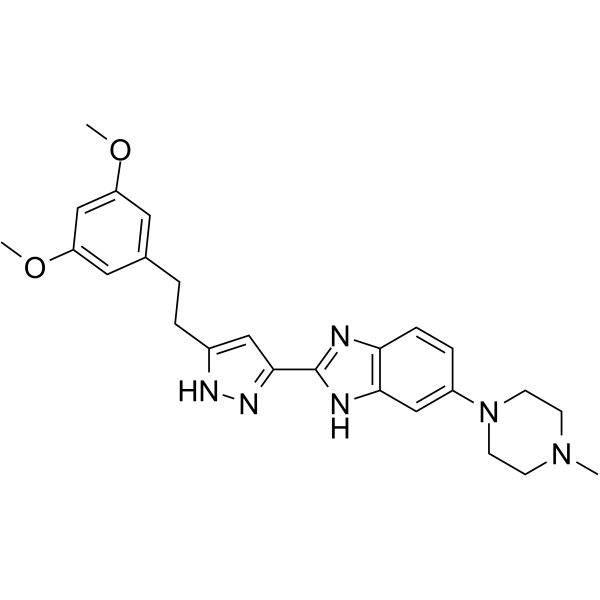
-
GC15217
Danusertib (PHA-739358)
A pan-Aurora kinase and Abl inhibitor
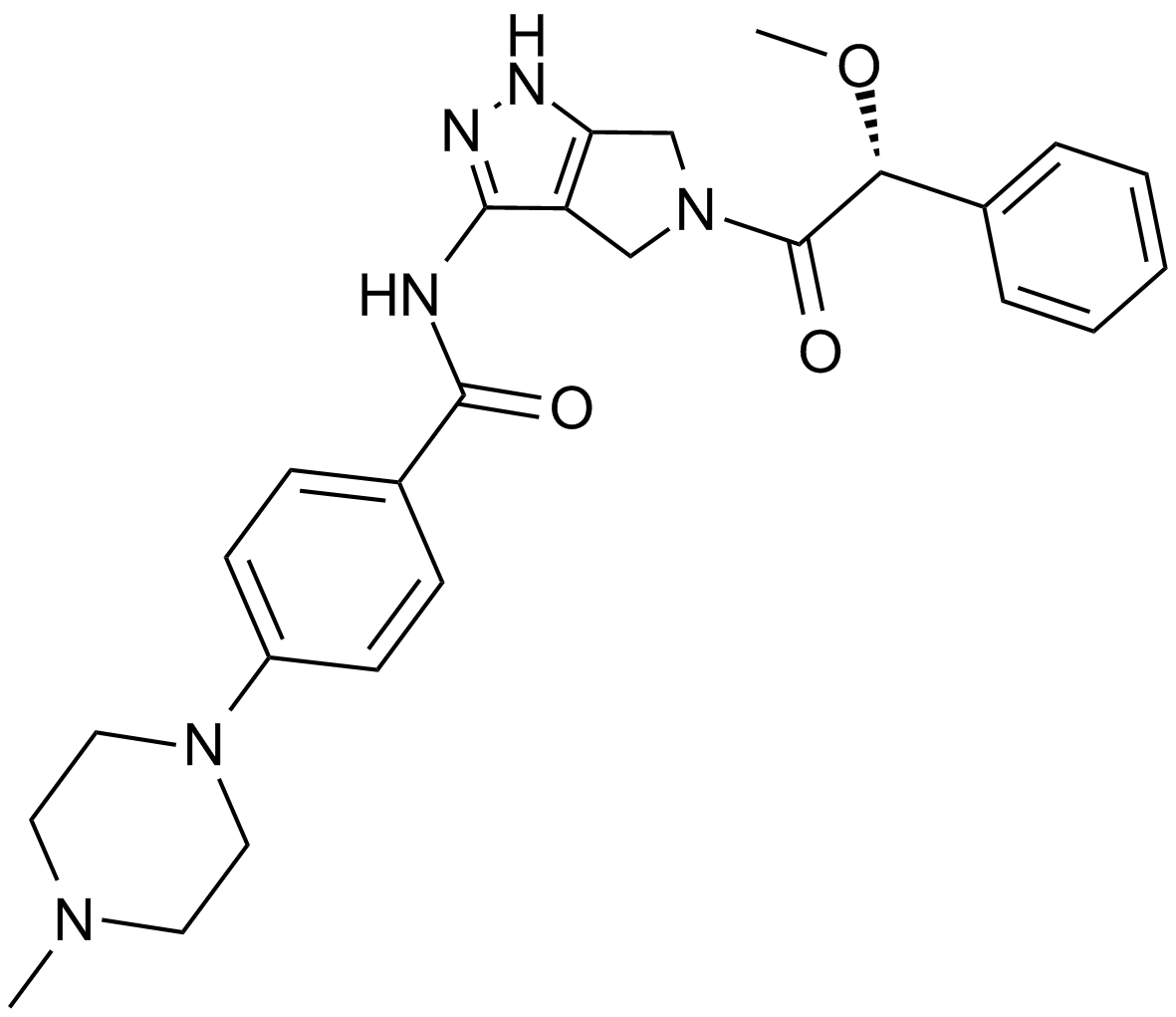
-
GC19399
Derazantinib
Derazantinib (ARQ-087) is an ATP competitive tyrosine kinase inhibitor; exhibits potent activity against FGFR1-3 chondrocytes with IC50s of 4.5, 1.8, and 4.5 nM, respectively.
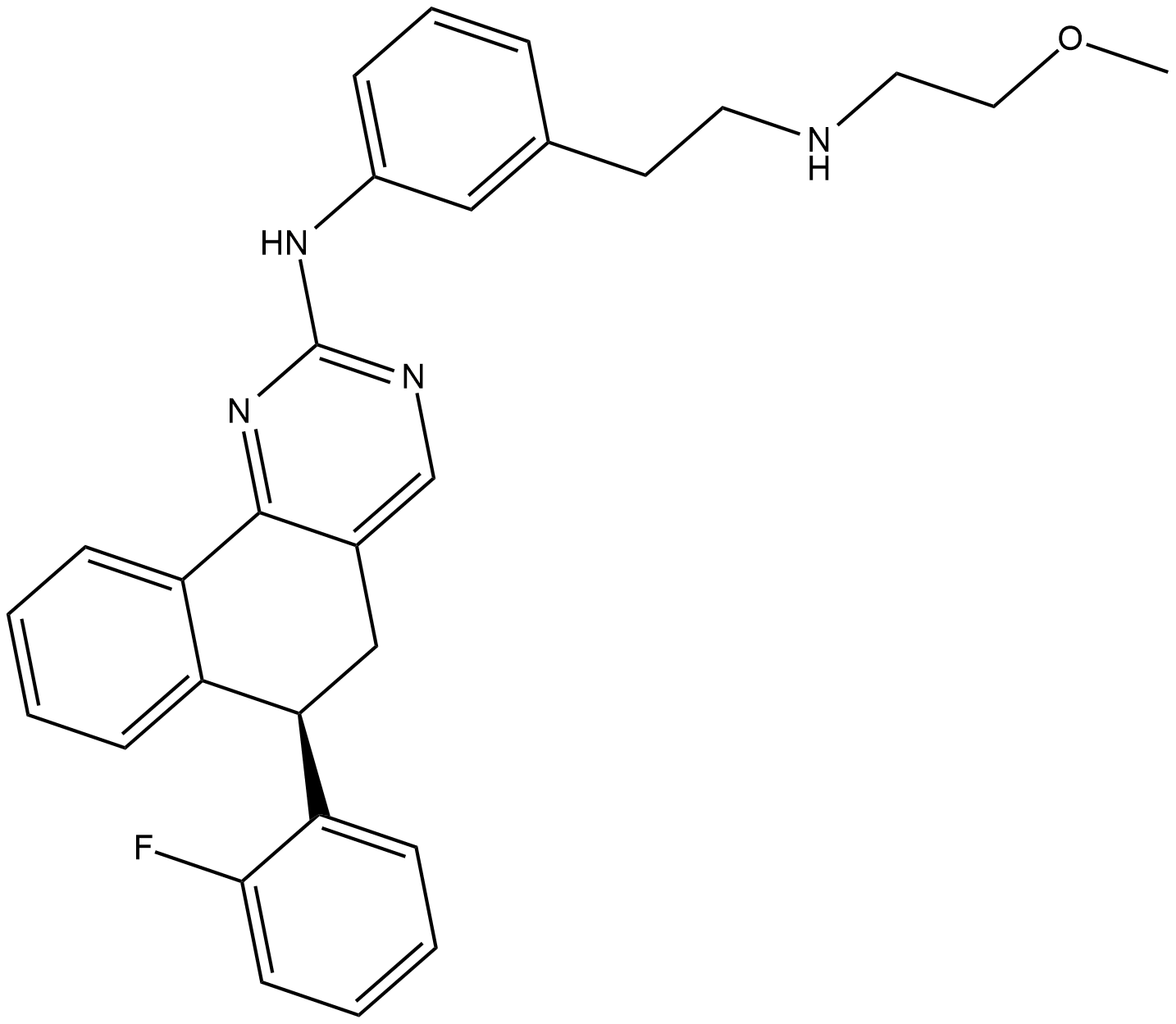
-
GC32760
Dovitinib lactate (CHIR-258 lactate)
Dovitinib lactate (CHIR-258 lactate) (TKI258 lactate) is a multi-targeted tyrosine kinase inhibitor with IC50s of 1, 2, 8/9, 10/13/8, 27/210 nM for FLT3, c-Kit, FGFR1/3, VEGFR1/2/3 and PDGFRα/β, respectively.
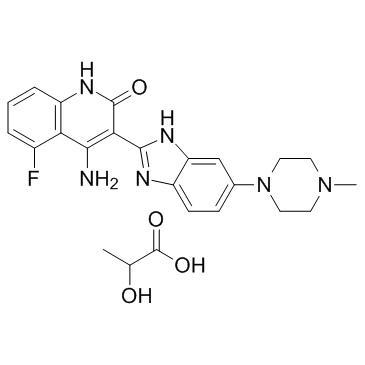
-
GC12149
E-3810

-
GC62696
E7090 succinate
E7090 succinate is an orally available, selective and potent inhibitor of FGFR1, FGFR2 and FGFR3 tyrosine kinase activities, with IC50 values of 0.71 nM, 0.50 nM, 1.2 nM, and 120 nM for FGFR1/2/3/4, respectively.
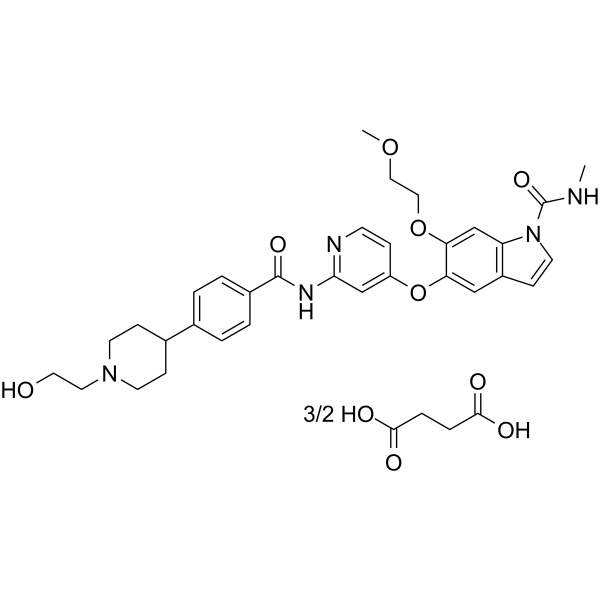
-
GC16519
ENMD-2076
A multi-kinase inhibitor
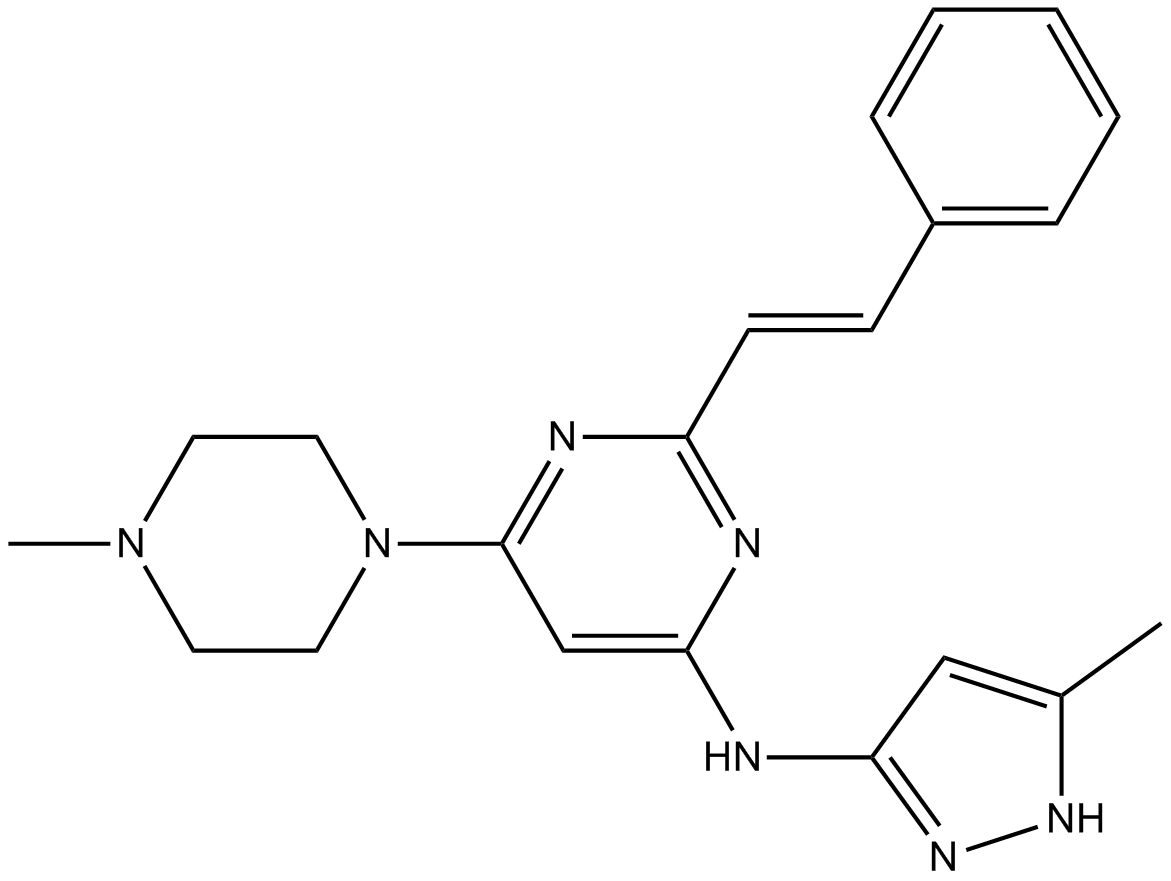
-
GC12145
ENMD-2076 L-(+)-Tartaric acid

-
GC19142
Erdafitinib
A pan-FGFR tyrosine kinase inhibitor
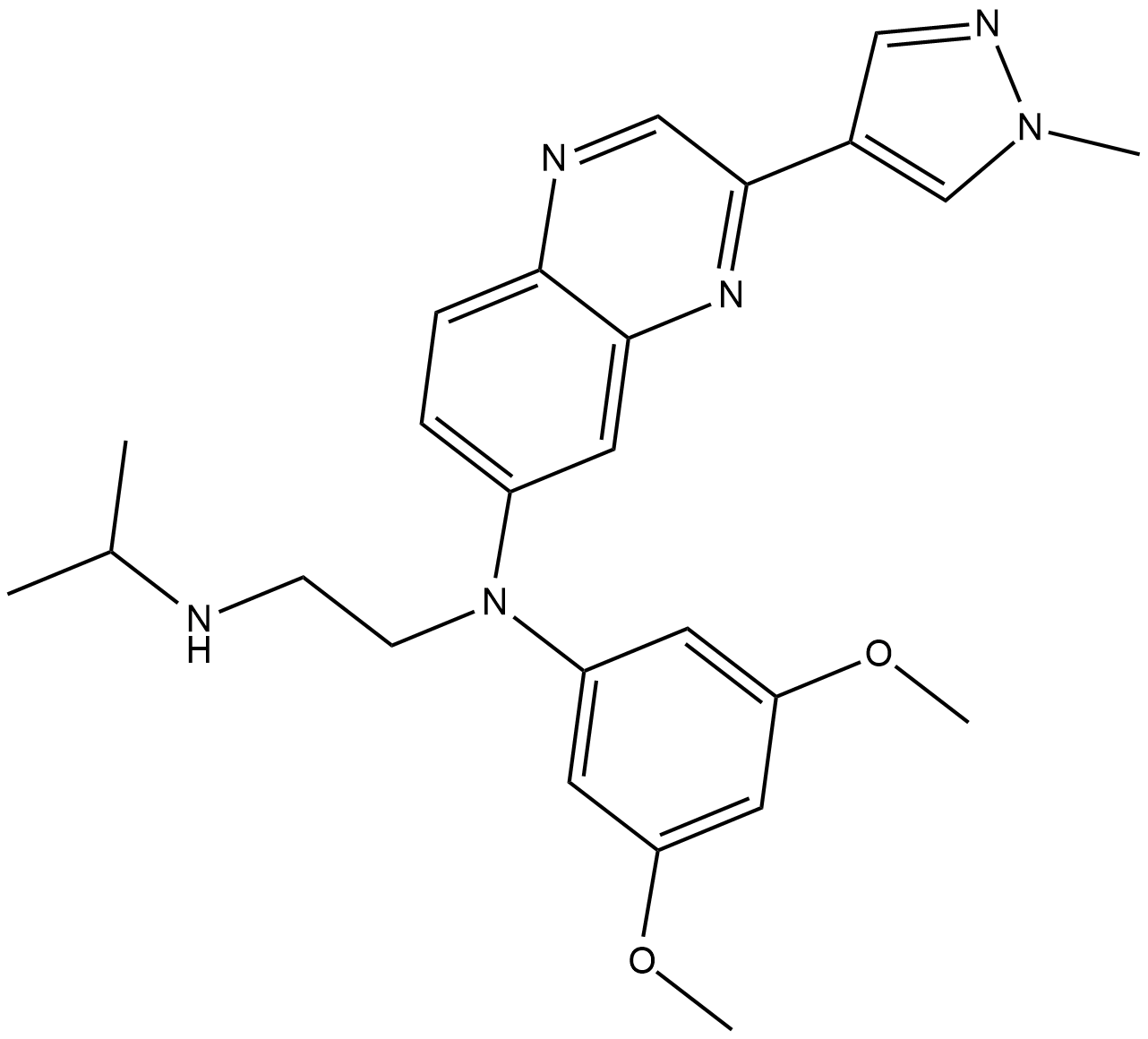
-
GC63395
FGFR-IN-1
FGFR-IN-1 is a potent FGFR inhibitor with an IC50 of <100 nM for FGFR1, FGFR2, and FGFR3, respectively (patent US20130338134A1, example 219).
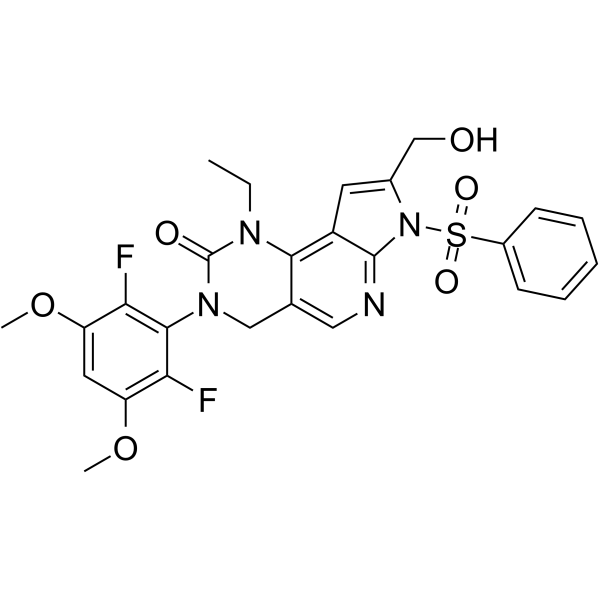
-
GC65212
FGFR1/DDR2 inhibitor 1
FGFR1/DDR2 inhibitor 1 is an orally active inhibitor of fibroblast growth factor receptor 1 (FGFR1) and discoindin domain receptor 2 (DDR2), with IC50 values of 31.1 nM and 3.2 nM, respectively. Antitumor activity.
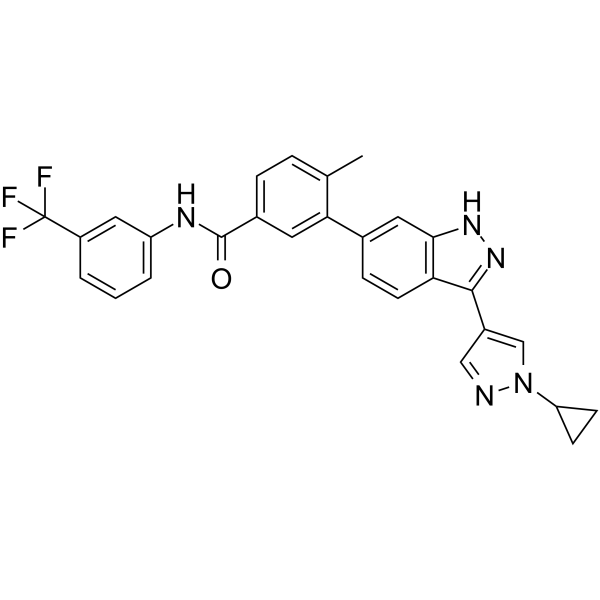
-
GC64475
FGFR2-IN-2
FGFR2-IN-2 (Compound 38) is a selective FGFR2 inhibitor with IC50s of 389, 29, and 758 nM for FGFR1, FGFR2, and FGFR3, respectively.
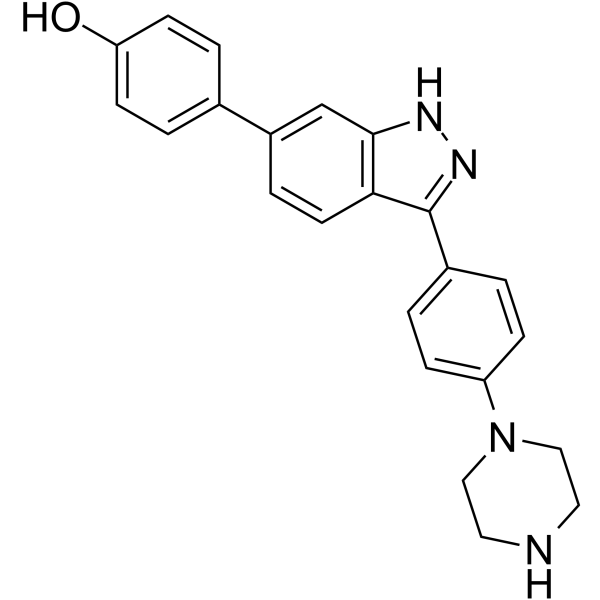
-
GC19155
FGFR4-IN-1
FGFR4-IN-1 is a potent inhibiotr of FGFR4 with IC50 of 0.7 nM.

-
GC62602
FGFR4-IN-5
FGFR4-IN-5 is a potent and selective covalent FGFR4 inhibitor with an IC50 of 6.5 nM. FGFR4-IN-5 exhibits strong anti-tumor activity in vivo and can be used for hepatocellular carcinoma research.
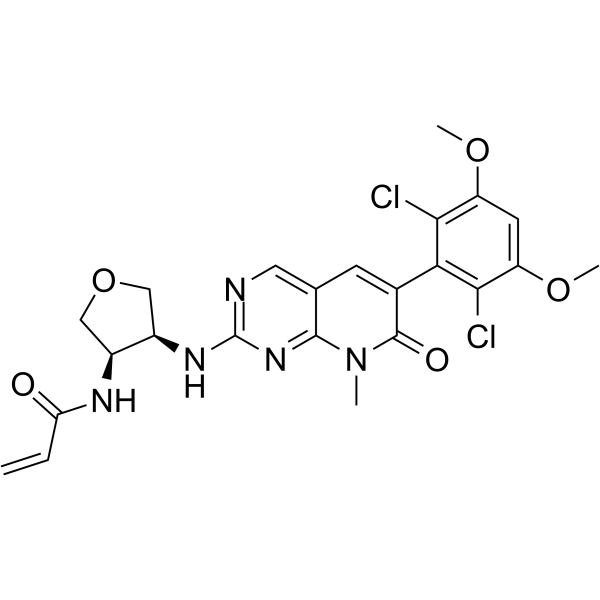
-
GC50051
FIIN 1 hydrochloride
FIIN 1 hydrochloride is a potent, irreversible, selective FGFR inhibitor. FIIN 1 hydrochloride binds to FGFR1/2/3/4 and Flt1/4 with Kds of 2.8/6.9/5.4/120 nM and 32/120 nM respectively. The biochemical IC50s of FIIN 1 hydrochloride are 9.2, 6.2, 11.9, and 189 nM against FGFR1/2/3/4, respectively.
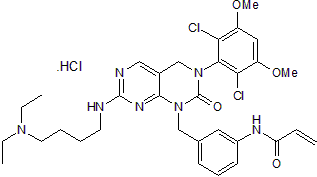
-
GC17323
FIIN-2
Irreversible inhibitor of FGFR
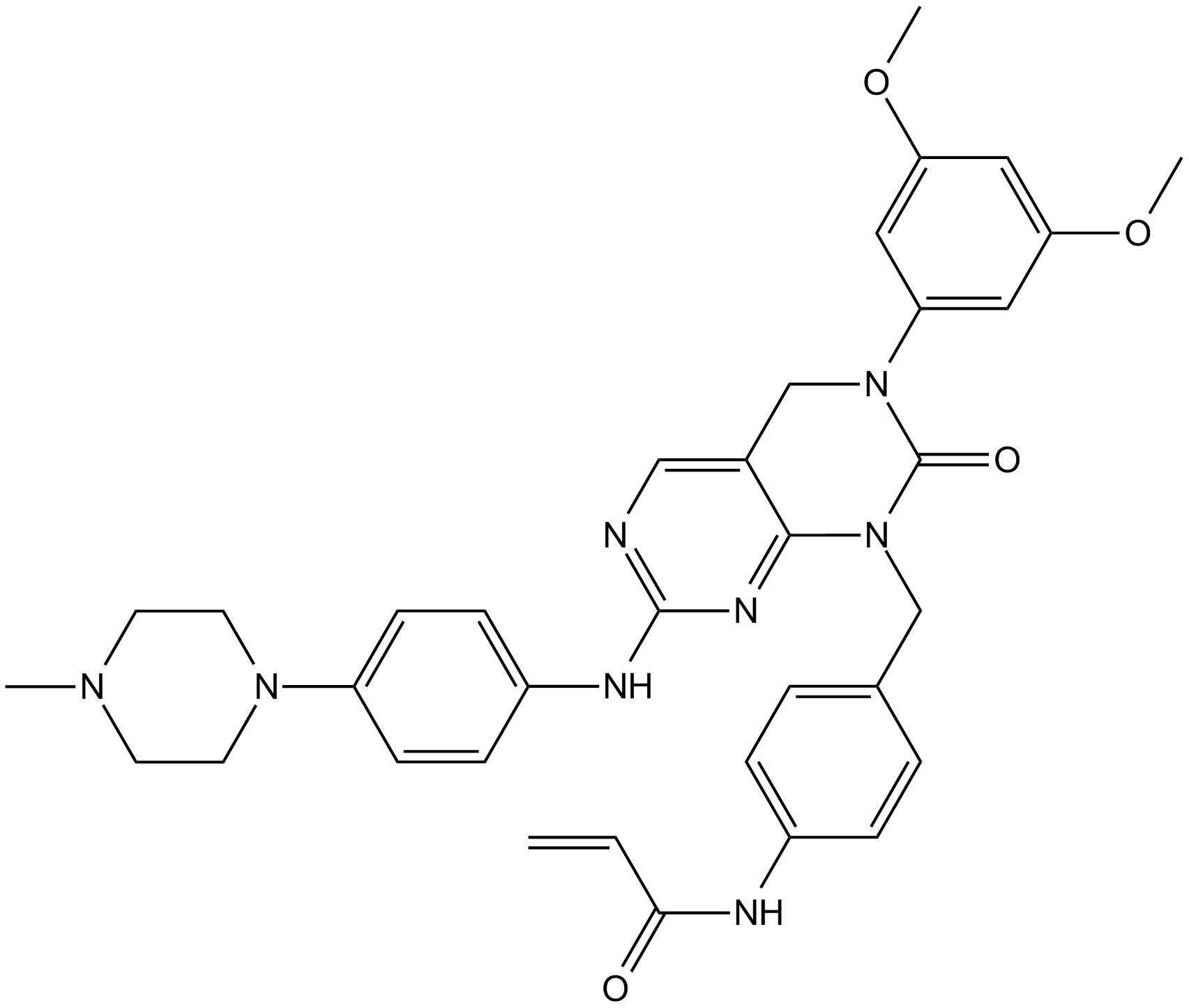
-
GC36044
FIIN-3
FIIN-3 is an irreversible inhibitor of FGFR with an IC50 of 13.1, 21, 31.4, and 35.3 nM for FGFR1, FGFR2, FGFR3 and FGFR4, respectively.
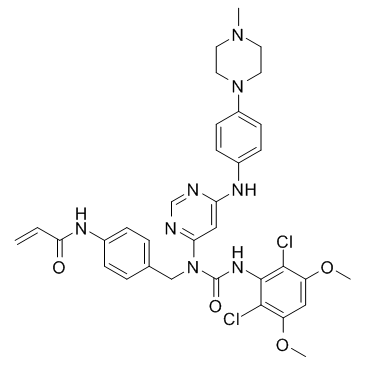
-
GN10527
Formononetin
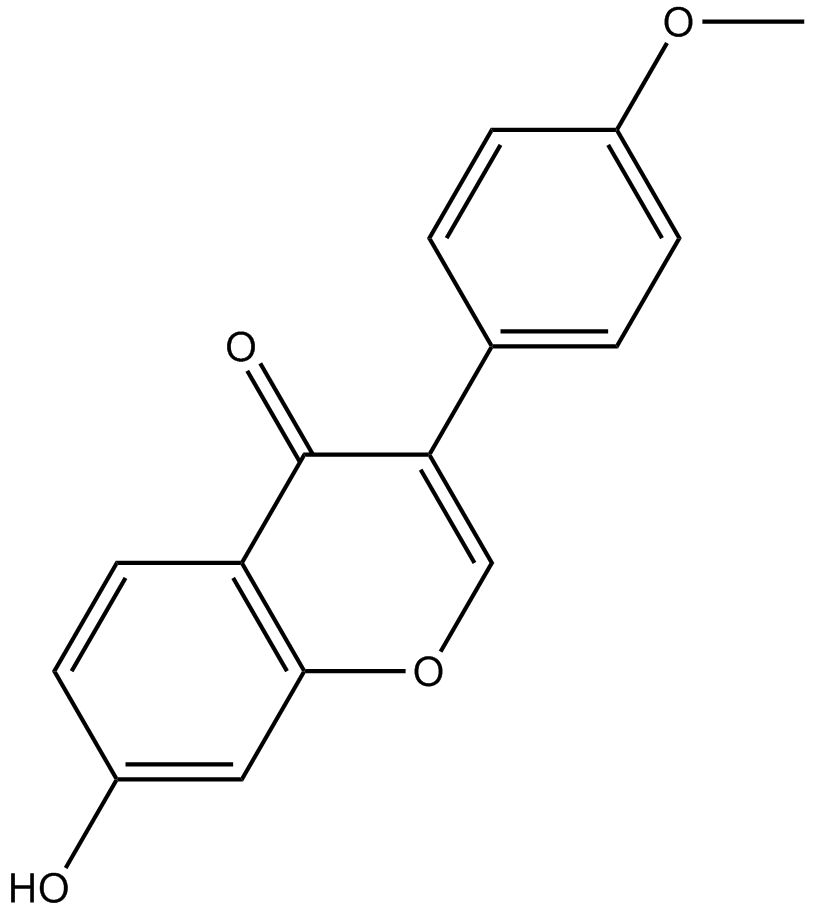
-
GN10540
Fumalic acid

-
GC64875
Gunagratinib
Gunagratinib (ICP-192) is a low toxicity and orally active pan-FGFR (fibroblast growth factor receptors) inhibitor that potently and selectively inhibits FGFR activities irreversibly by covalent binding. Gunagratinib can be used for the research of cancer.
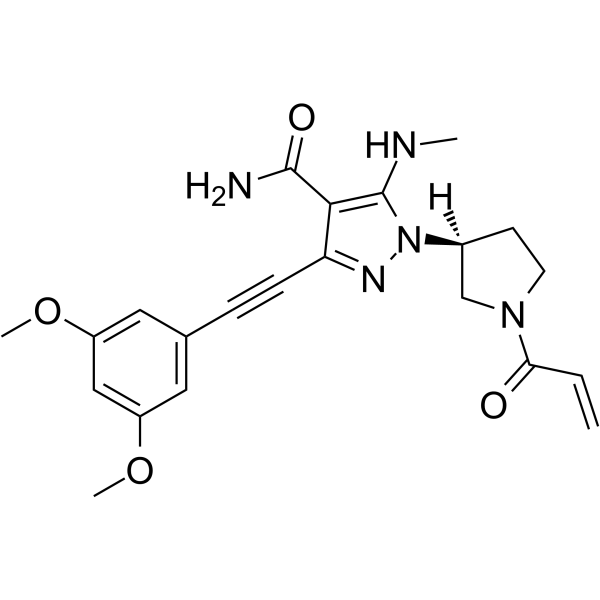
-
GC19187
H3B-6527
H3B-6527 (H3 Biomedicine) is a highly selective FGFR4 inhibitor with potent antitumour activity in FGF19 amplified cell lines and mice.

-
GC30767
Heparan Sulfate
Heparan sulfate (HS) is a complex, polyanionic polysaccharide ubiquitously expressed on cell surfaces and in the extracellular matrix.
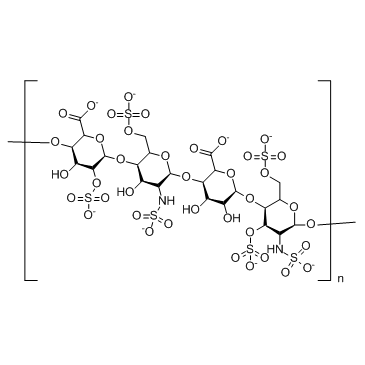
-
GC14592
KW 2449
A multi-kinase inhibitor
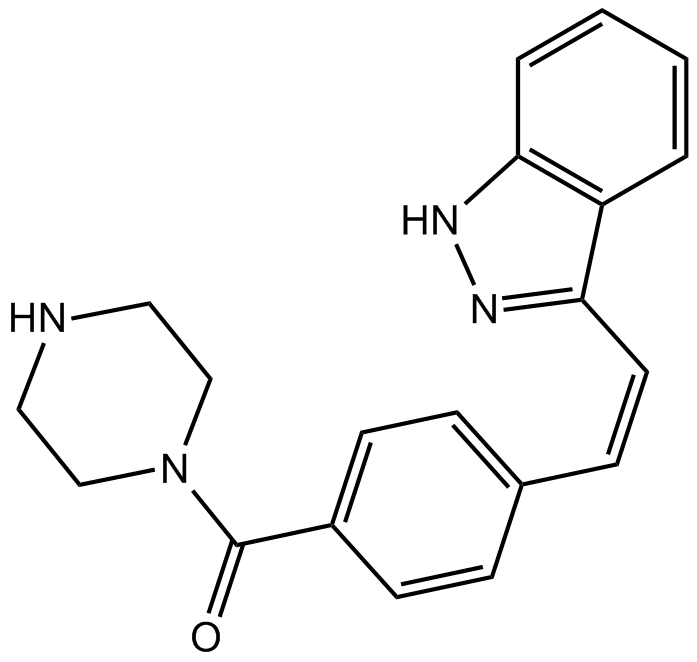
-
GC15454
Lenvatinib (E7080)
Lenvatinib (E7080) (E7080) is an oral, multi-targeted tyrosine kinase inhibitor that inhibits VEGFR1-3, FGFR1-4, PDGFR, KIT, and RET, shows potent antitumor activities.
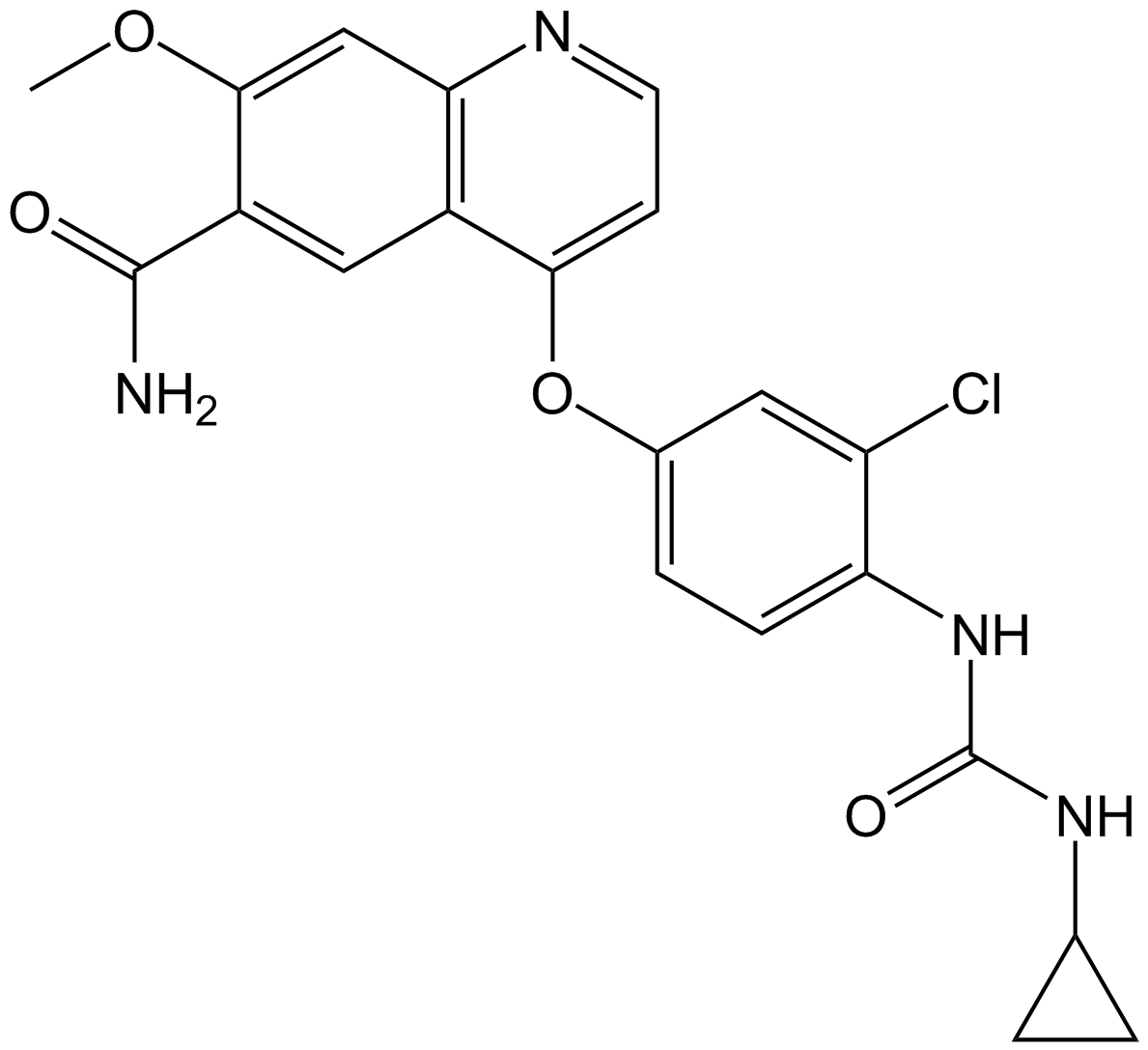
-
GC36438
Lenvatinib mesylate
An inhibitor of VEGFR2 and VEGFR3
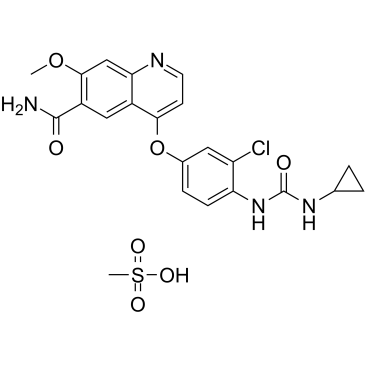
-
GC13848
LY2784544
Potent inhibitor of JAK2
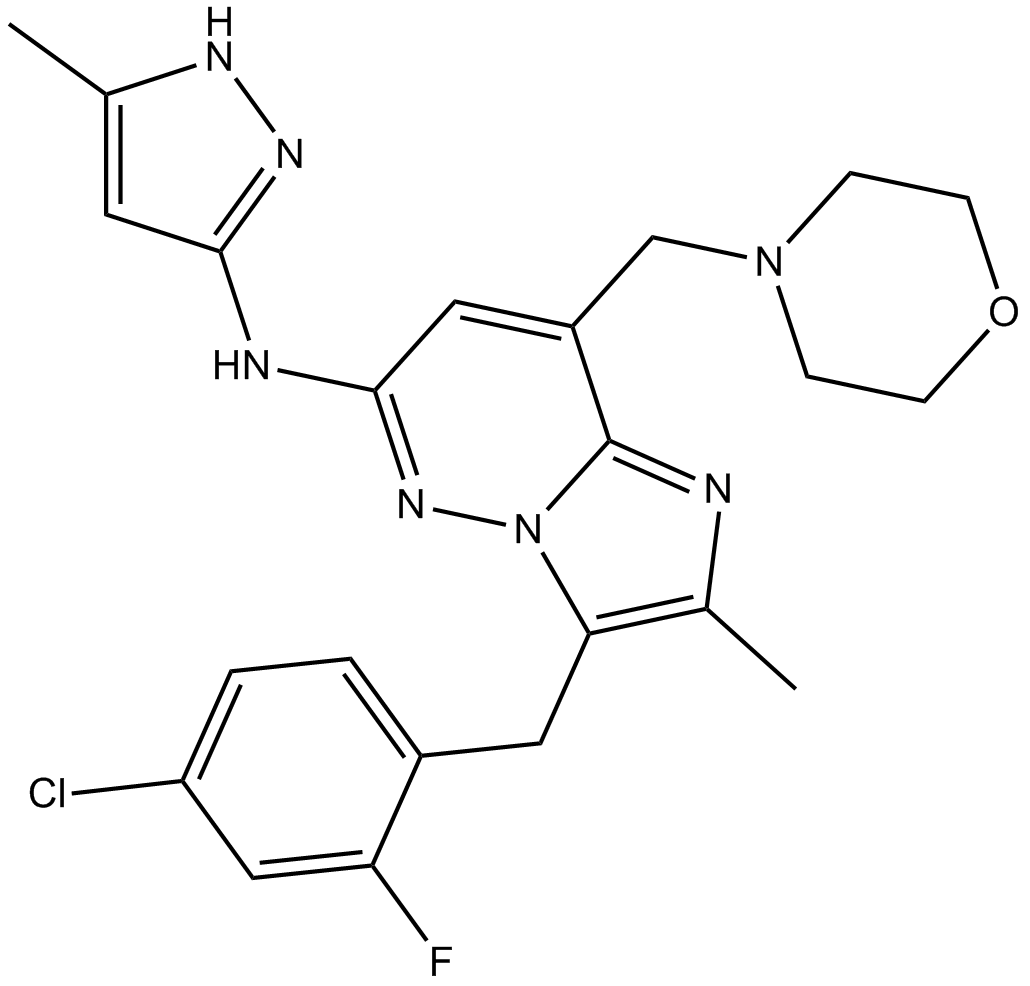
-
GC13424
LY2874455
A pan-FGFR inhibitor

-
GC36546
Masitinib mesylate
Masitinib mesylate (AB-1010 mesylate) is a potent, orally bioavailable, and selective inhibitor of c-Kit (IC50=200 nM for human recombinant c-Kit). It also inhibits PDGFRα/β (IC50s=540/800 nM), Lyn (IC50= 510 nM for LynB), Lck, and, to a lesser extent, FGFR3 and FAK. Masitinib mesylate (AB-1010 mesylate) has anti-proliferative, pro-apoptotic activity and low toxicity.
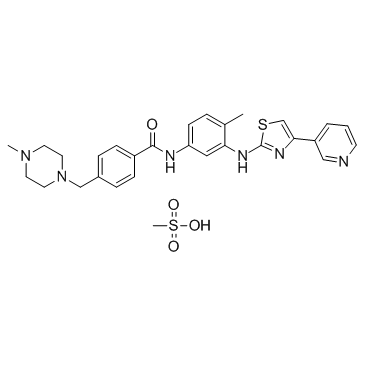
-
GC65179
MAX-40279
MAX-40279 is a dual and potent inhibitor of FLT3 kinase and FGFR kinase.
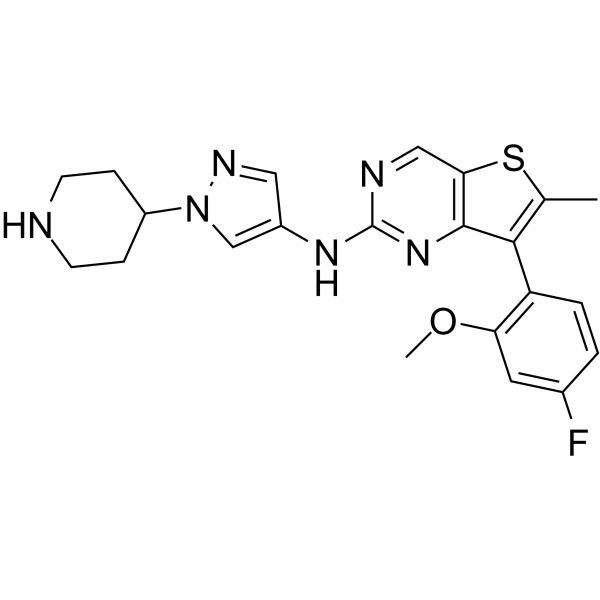
-
GC49686
N-desmethyl Regorafenib N-oxide
An active metabolite of regorafenib

-
GC11705
Nintedanib (BIBF 1120)
A VEGFR, FGFR, and PDGFR inhibitor
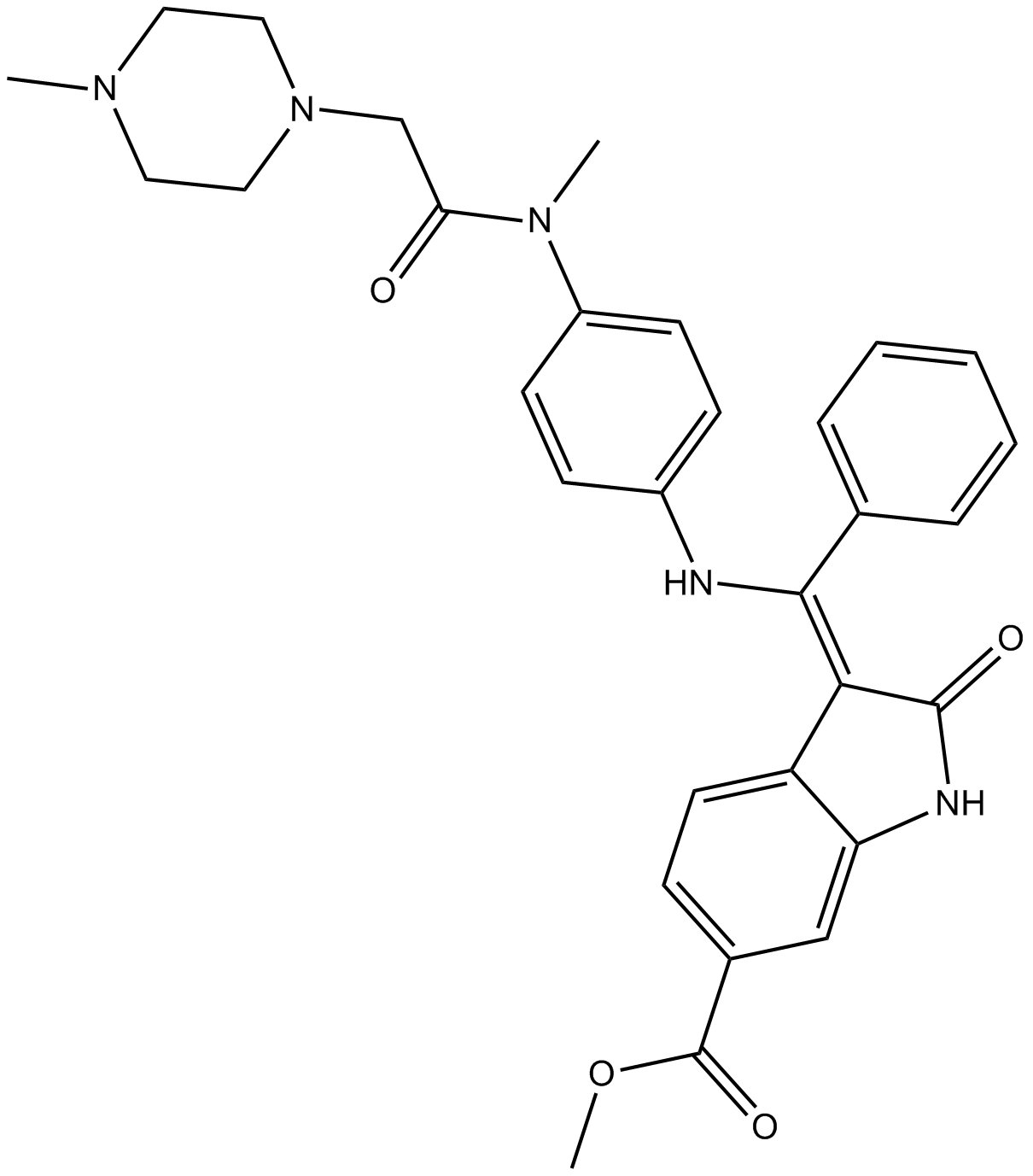
-
GC36745
Nintedanib esylate
Nintedanib esylate, as a kinase inhibitor, used for the treatment of non-small cell lung cancer suffered from first-pass metabolism which resulted in low oral bioavailability .
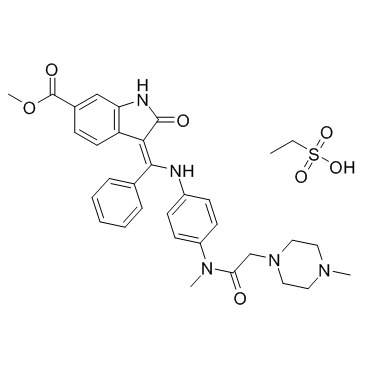
-
GC16028
NVP-BGJ398 phosphate
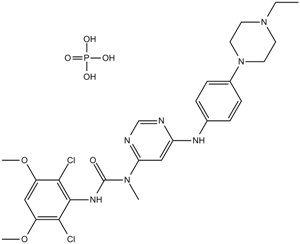
-
GC64950
ODM-203
ODM-203 is an orally active and selective FGFR/VEGFR inhibitor with IC50 values of 6, 11, 16, 5, 9, 26 and 35 nM for FGFR3/1/2 and VEGFR3/2/1/4, respectively. ODM-203 has strong anti-tumour activity and activates immune responses in the tumour microenvironment.
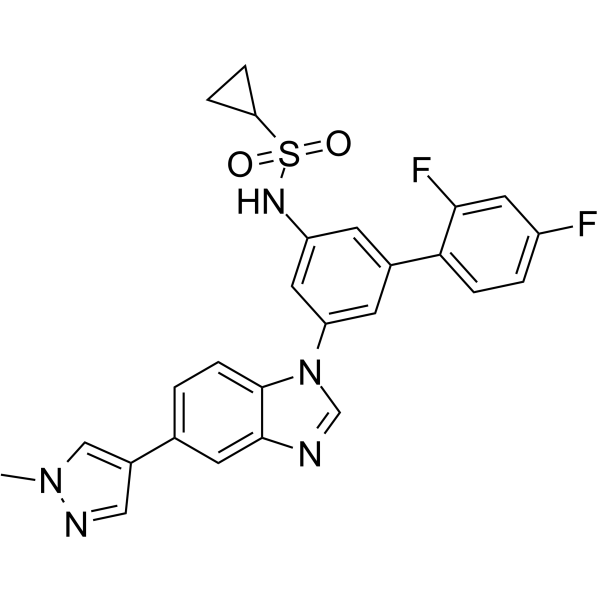
-
GC16327
Pazopanib (GW-786034)
A multi-kinase inhibitor

-
GC12730
Pazopanib Hydrochloride
VEGFR/PDGFR/FGFR/c-Kit/ c-Fms inhibitor
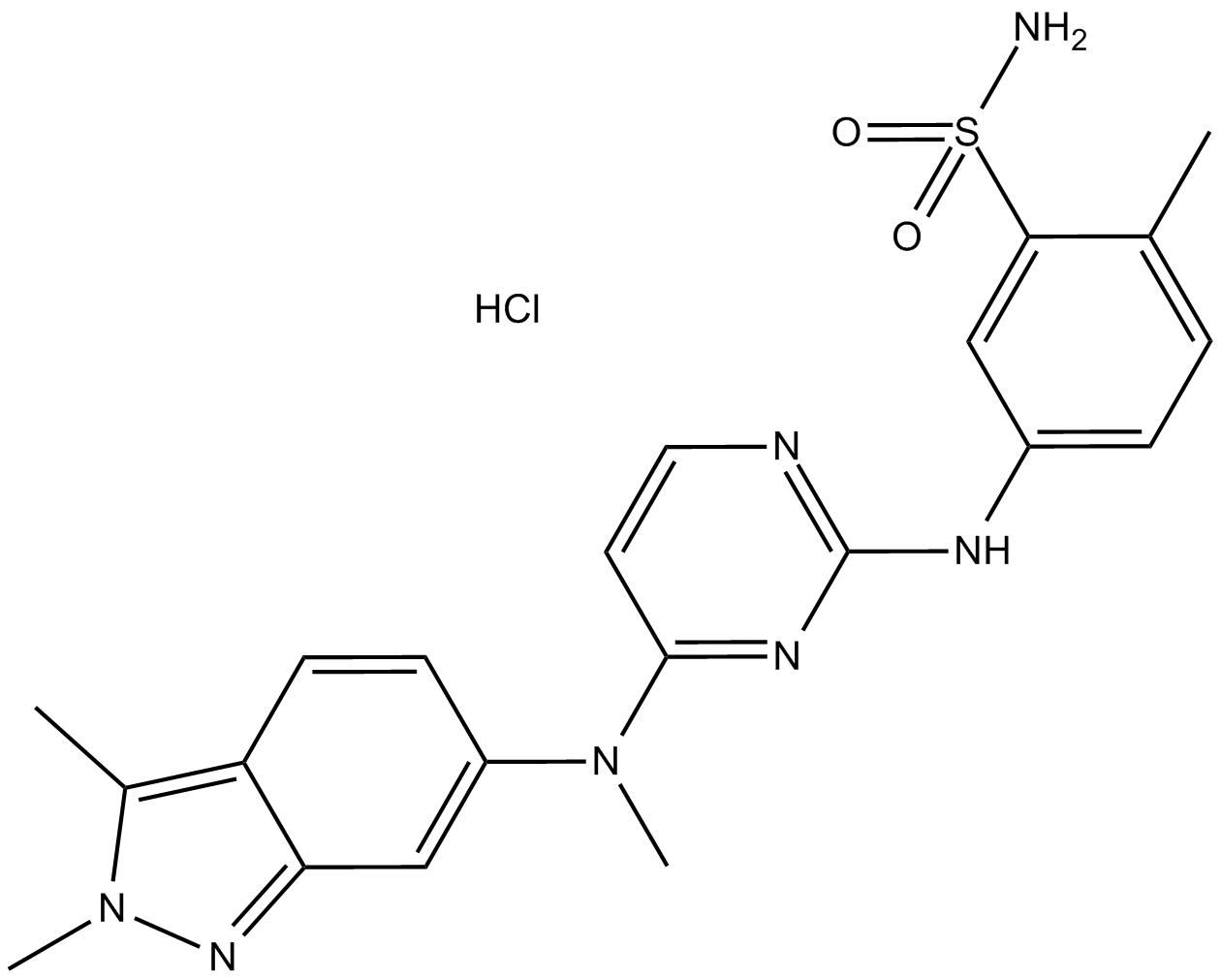
-
GC44583
PD 089828
PD 089828 is a competitive inhibitor of the receptor tyrosine kinases FGFR1, PDGFRβ, and EGFR (IC50s = 0.15, 1.76, and 5.47 μM, respectively) and a noncompetitive inhibitor of the nonreceptor tyrosine kinase c-Src (IC50 = 0.18 μM).

-
GC12049
PD 161570
FGFR inhibitor
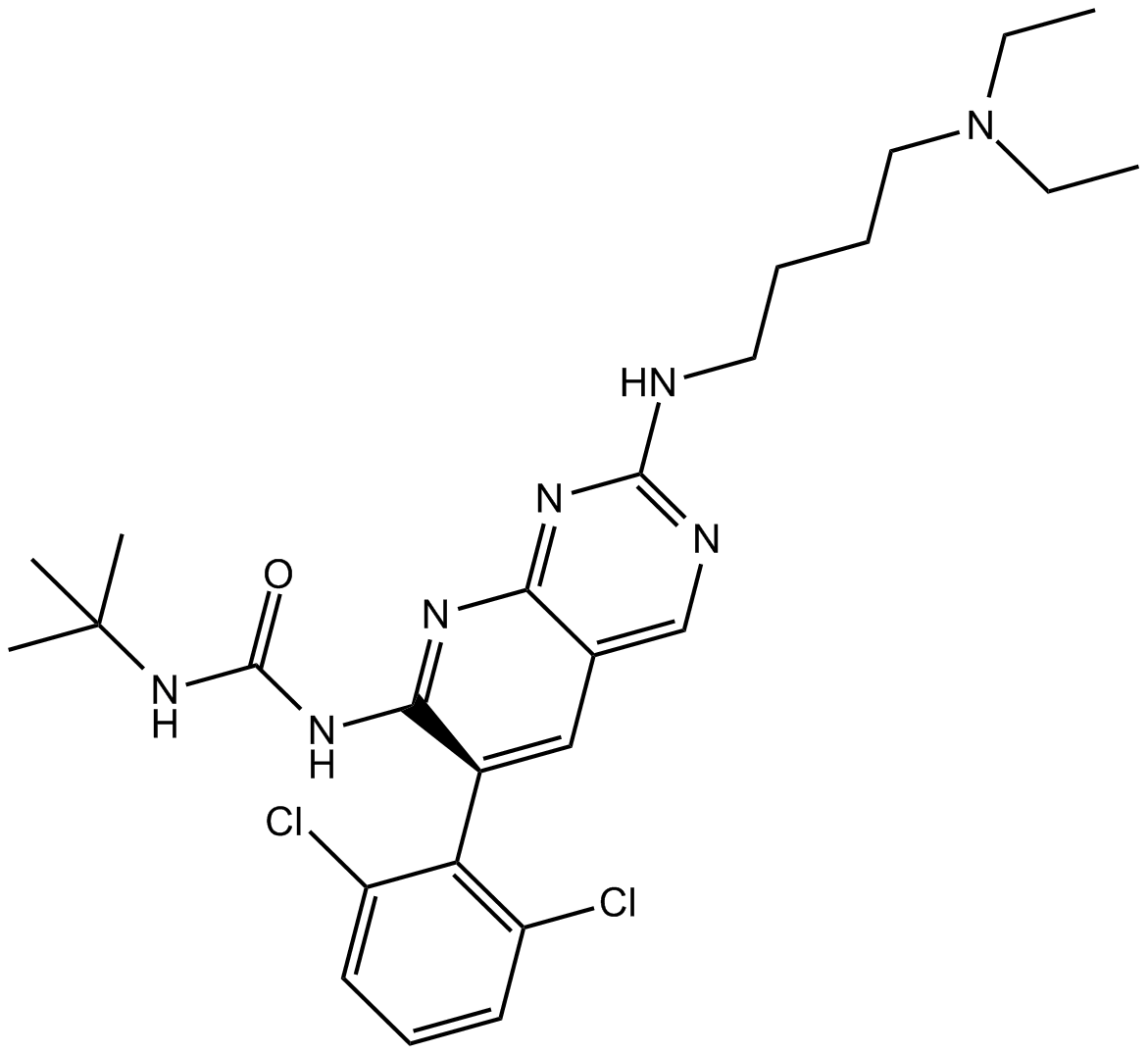
-
GC17943
PD 173074
Inhibitor of tyrosine kinase activity of fibroblast growth factor receptors
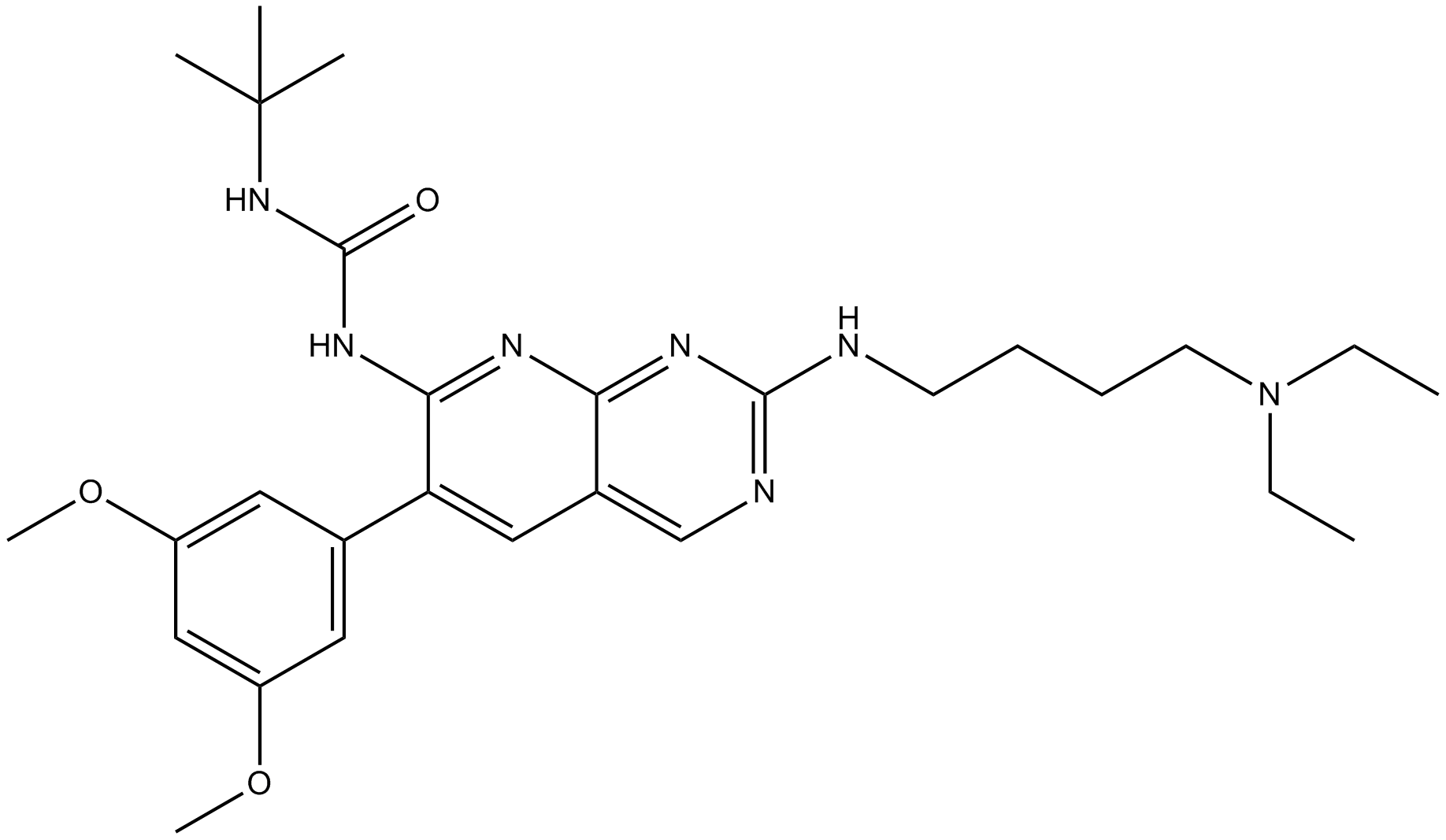
-
GC19279
PD-166866
PD166866 is a selective FGFR1 tyrosine kinase inhibitor with an IC50 of 52.4 nM.
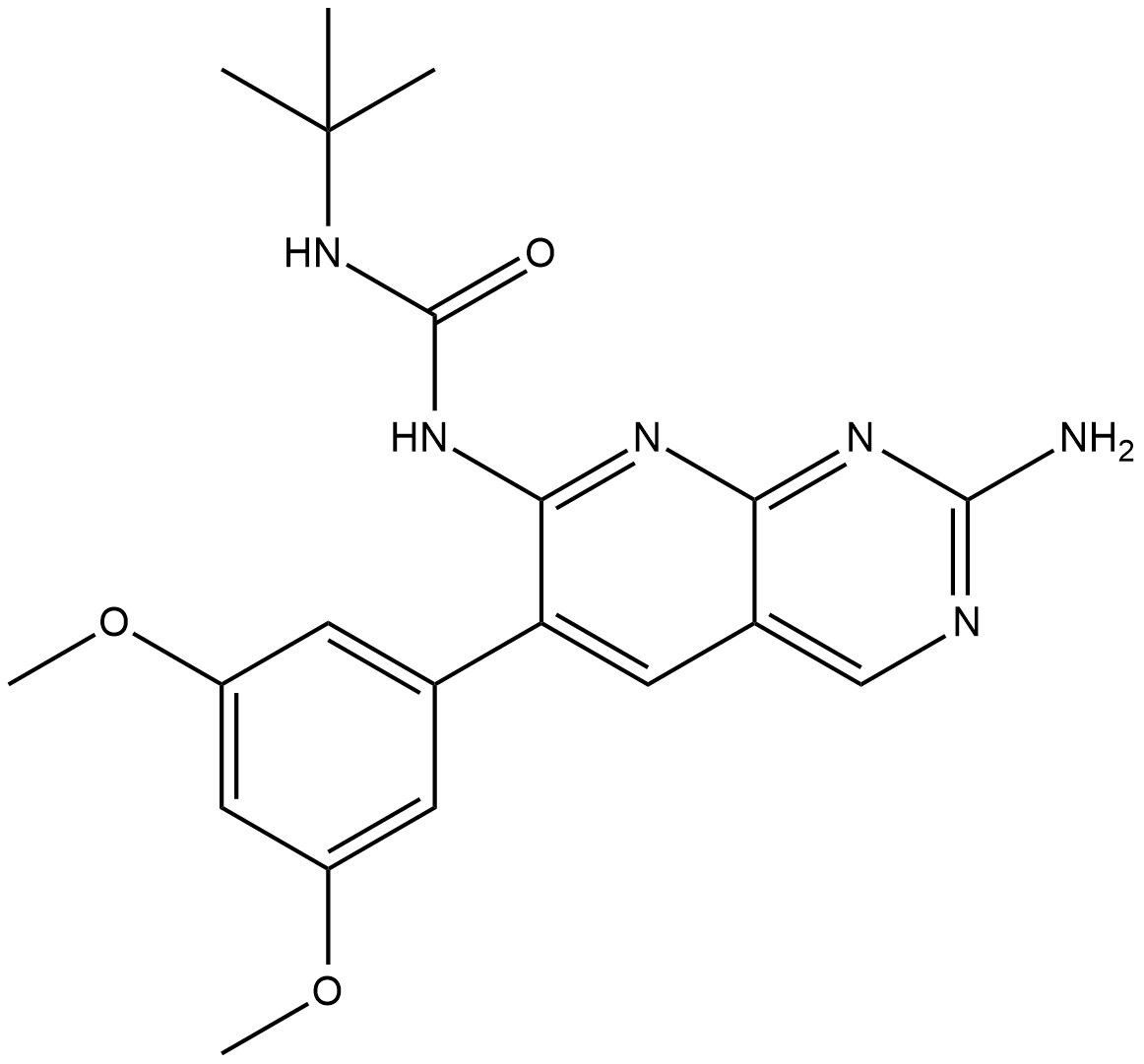
-
GC32915
Pemigatinib
An FGFR inhibitor

-
GC31495
PF-05231023
PF-05231023 is a PEG-based PROTAC linker that can be used in the synthesis of PROTACs.
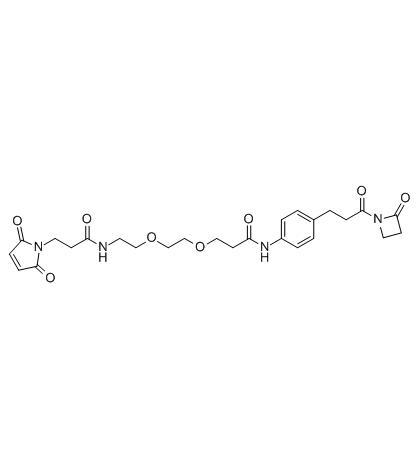
-
GC14396
Ponatinib (AP24534)
Ponatinib (AP24534) (AP24534) is an orally active multi-targeted kinase inhibitor with IC50s of 0.37 nM, 1.1 nM, 1.5 nM, 2.2 nM, and 5.4 nM for Abl, PDGFRα, VEGFR2, FGFR1, and Src, respectively.
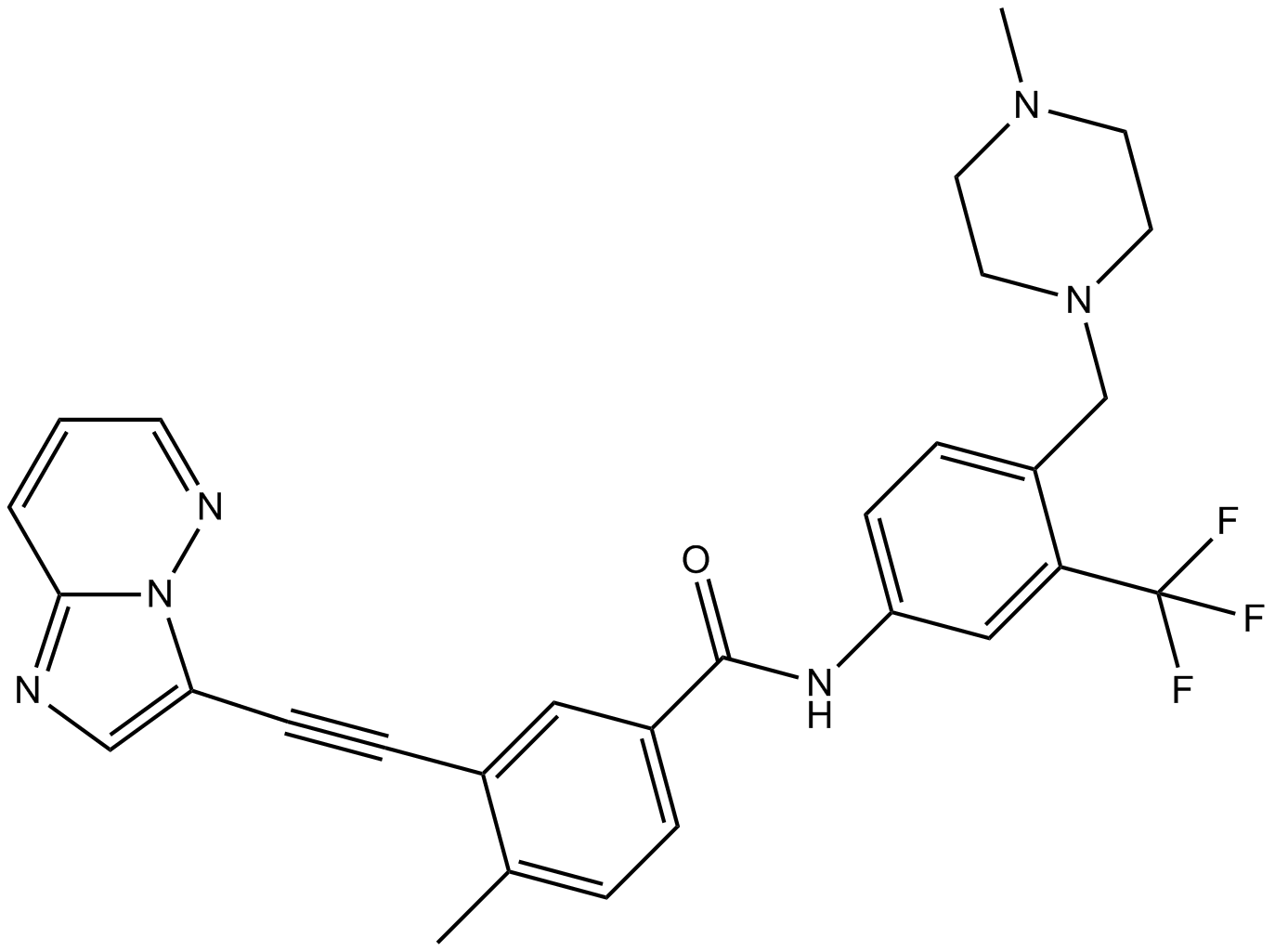
-
GC45828
Ponatinib-d8
An internal standard for the quantification of ponatinib

-
GC32835
PP58
PP58 is a pyrido[2,3-d]pyrimidine-based compound that inhibits PDGFR, FGFR and Src family activities with nanomolar IC50 values.
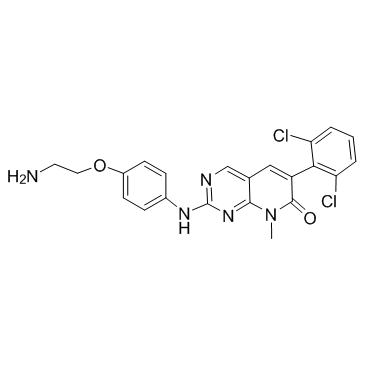
-
GC32802
PRN1371
An irreversible pan-FGFR inhibitor
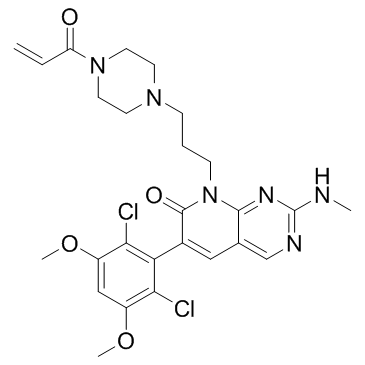
-
GC19154
Roblitinib
Roblitinib (FGF-401) is a 1,8-naphthyridine pyridine derivative
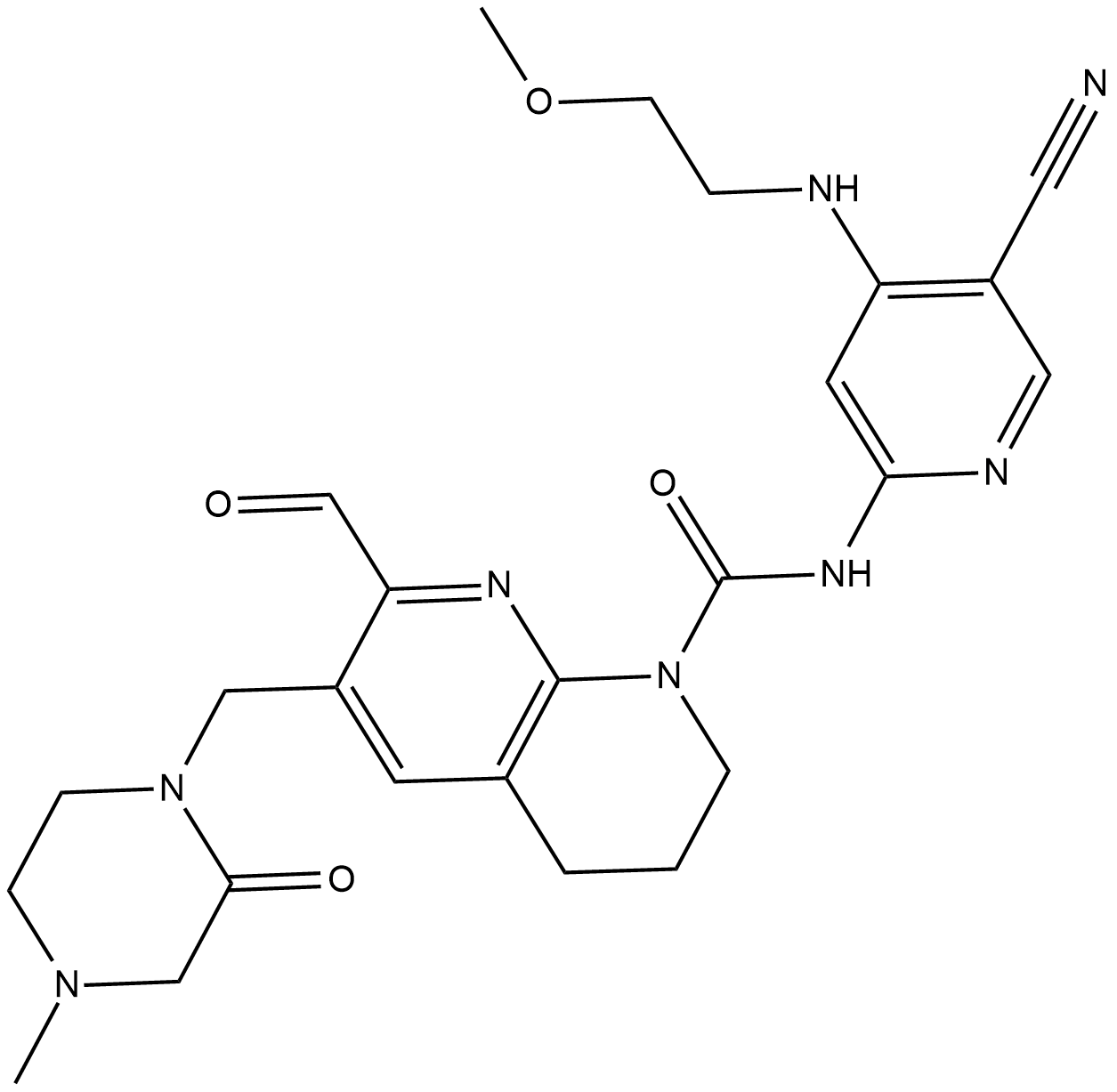
-
GC34067
Rogaratinib (BAY1163877)
Rogaratinib (BAY1163877) (BAY1163877) is a potent and selective fibroblast growth factor receptor (FGFR) inhibitor.
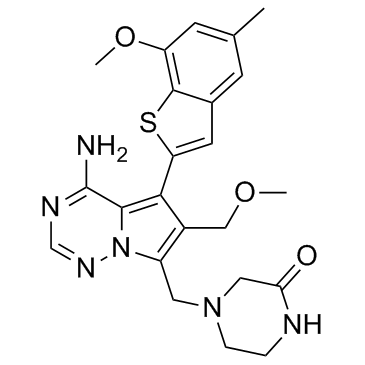
-
GC19317
S49076
S49076 is a novel, potent inhibitor of MET, AXL/MER, and FGFR1/2/3 with IC50 values below 20 nM.

-
GC12776
SKLB610
An inhibitor of VEGFR2
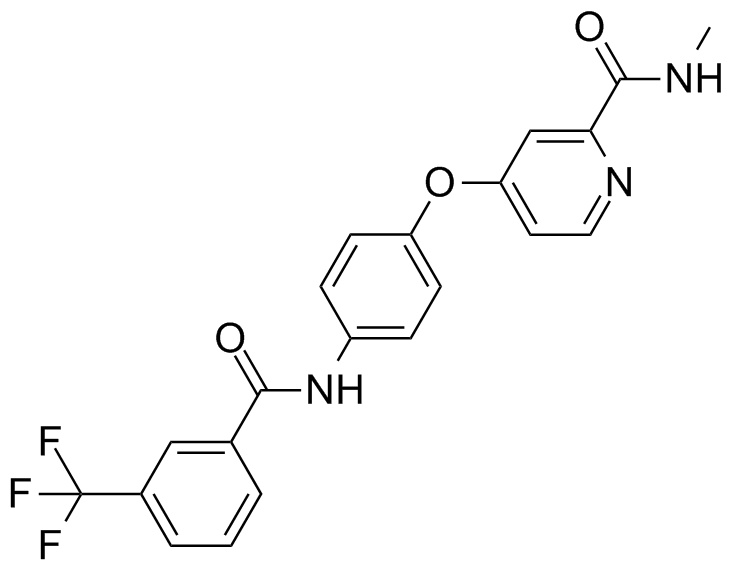
-
GC62675
SM1-71
SM1-71 (compound 5) is a potent TAK1 inhibitor, with a Ki of 160 nM, it also can covalently inhibit MKNK2, MAP2K1/2/3/4/6/7, GAK, AAK1, BMP2K, MAP3K7, MAPKAPK5, GSK3A/B, MAPK1/3, SRC, YES1, FGFR1, ZAK (MLTK), MAP3K1, LIMK1 and RSK2. SM1-71 can inhibit proliferation of multiple cancer cell lines.

-
GC10491
SSR128129E
allosteric inhibitor of FGFR1, orally-active
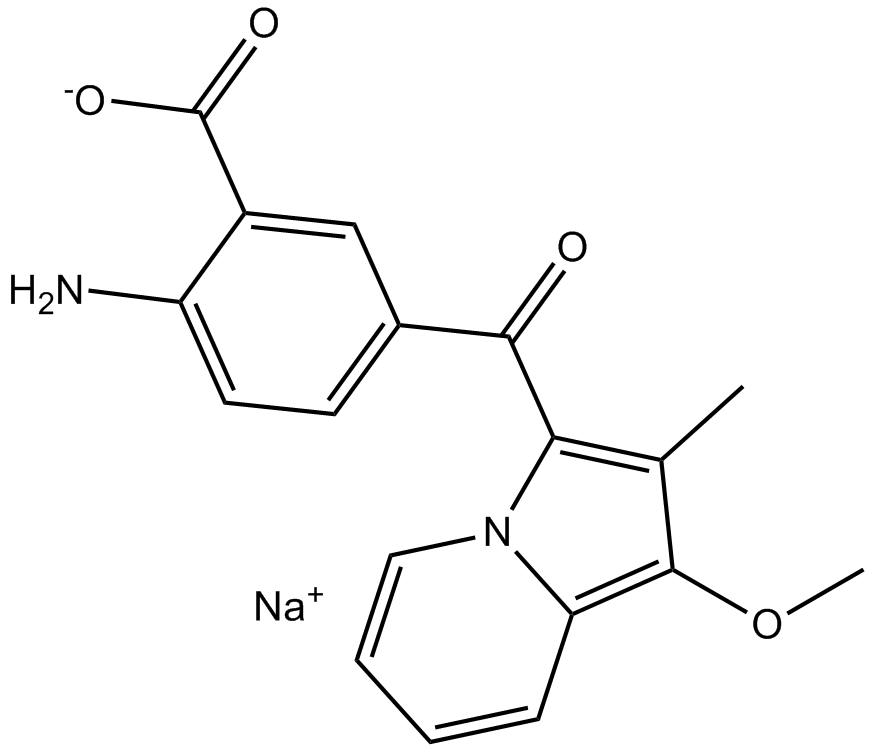
-
GC37679
SSR128129E free acid
SSR128129E free acid is an orally available and allosteric FGFR inhibitor with an IC50 of 1.9 μM for FGFR1.

-
GC14660
SU 5402
An inhibitor of VEGFR2, FGFR1, and PDGFRβ
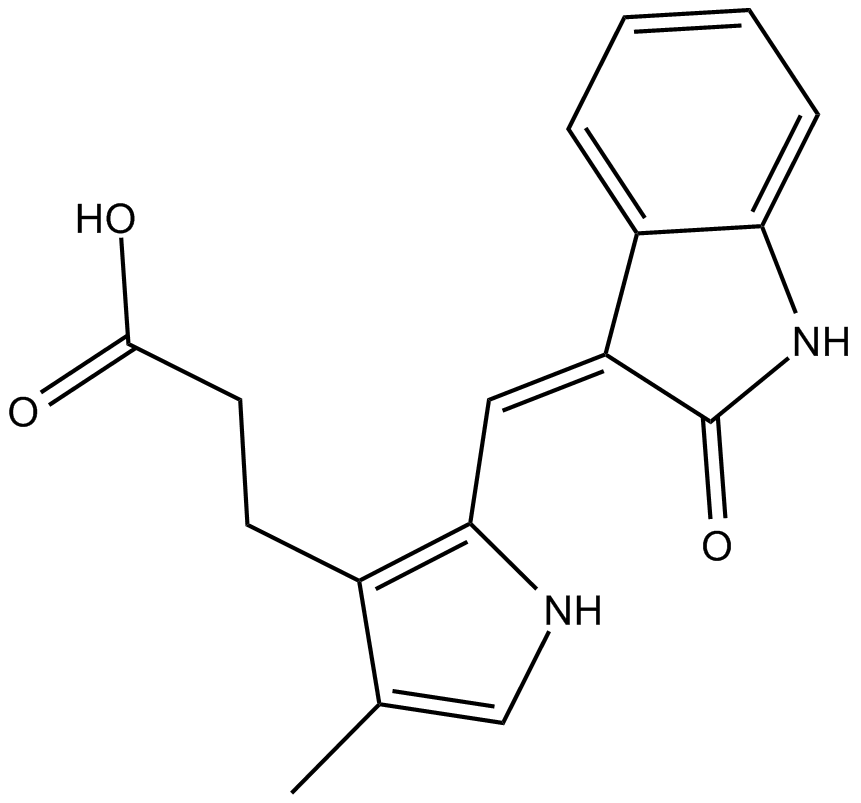
-
GC61957
SU4984
SU4984 is a protein tyrosine kinase inhibitor, with an IC50 of 10-20 μM for fibroblast growth factor receptor 1 (FGFR1). SU4984 is also inhibits platelet-derived growth factor receptor, and insulin receptor. SU4984 can be used for the research of cancer.
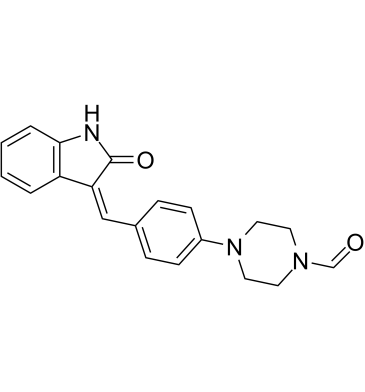
-
GC32805
Sulfatinib (HMPL-012)
Sulfatinib (HMPL-012) (HMPL-012) is a potent and highly selective tyrosine kinase inhibitor against VEGFR1/2/3, FGFR1 and CSF1R with IC50s of in a range of 1 to 24 nM.
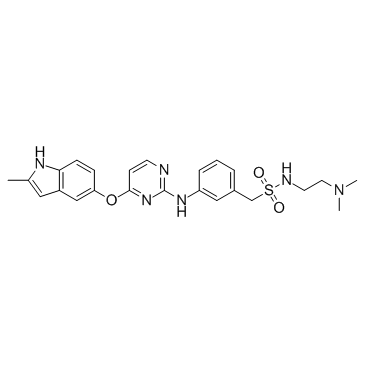
-
GC19341
SUN11602
SUN11602 is a novel aniline compound with basic fibroblast growth factor-like activity.
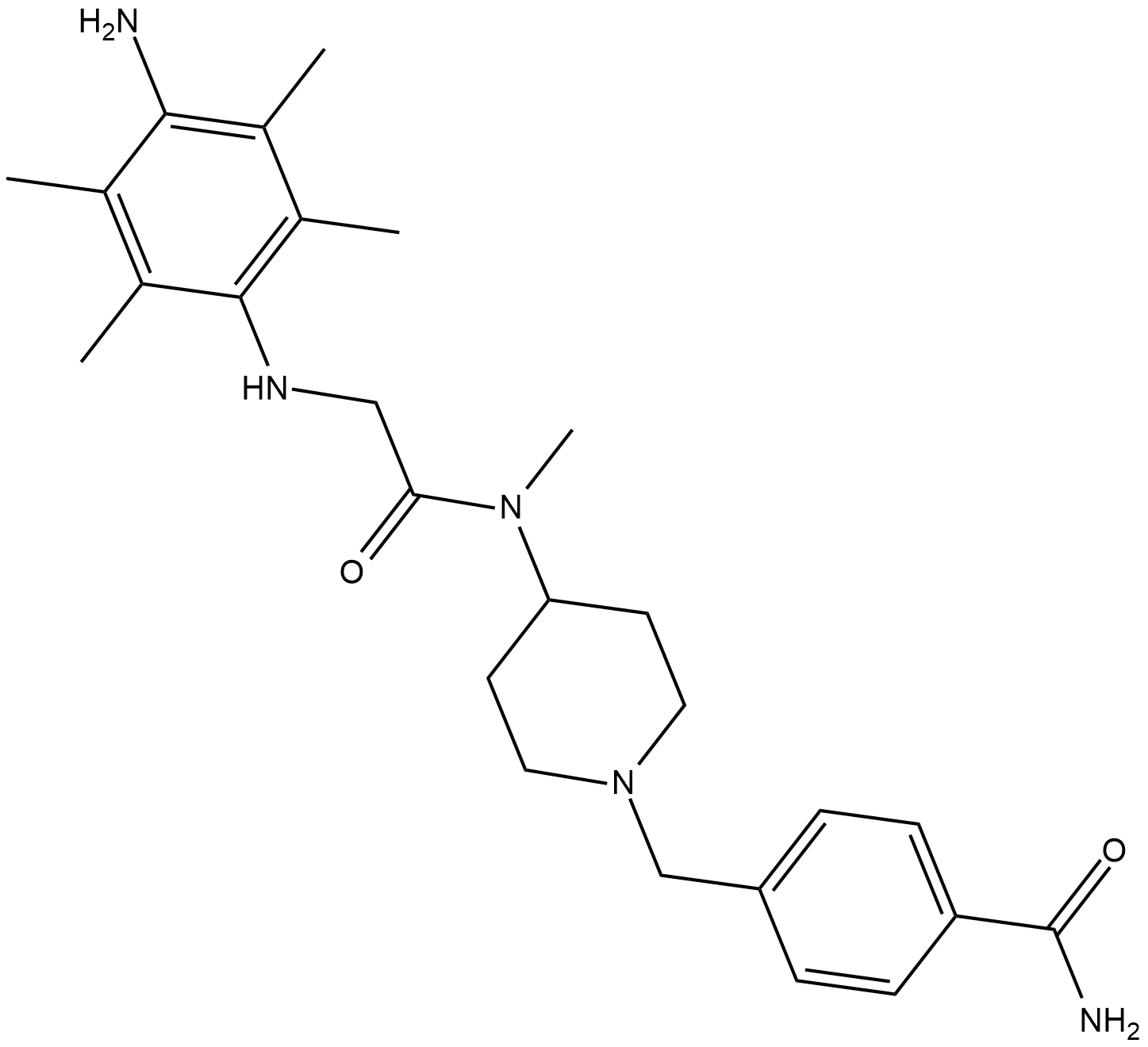
-
GC49700
Takeda-6d

-
GC19156
TAS-120
TAS-120 (TAS-120) is an orally bioavailable, highly selective, and irreversible FGFR inhibitor, with IC50s of 3.9, 1.3, 1.6, and 8.3 nM for FGFR 1-4, respectively. TAS-120 inhibits mutant and wild-type FGFR2 with similar IC50s (wild-type FGFR2=0.9nM; V5651=1-3nM; N550H=3.6nM; E566G=2.4nM).
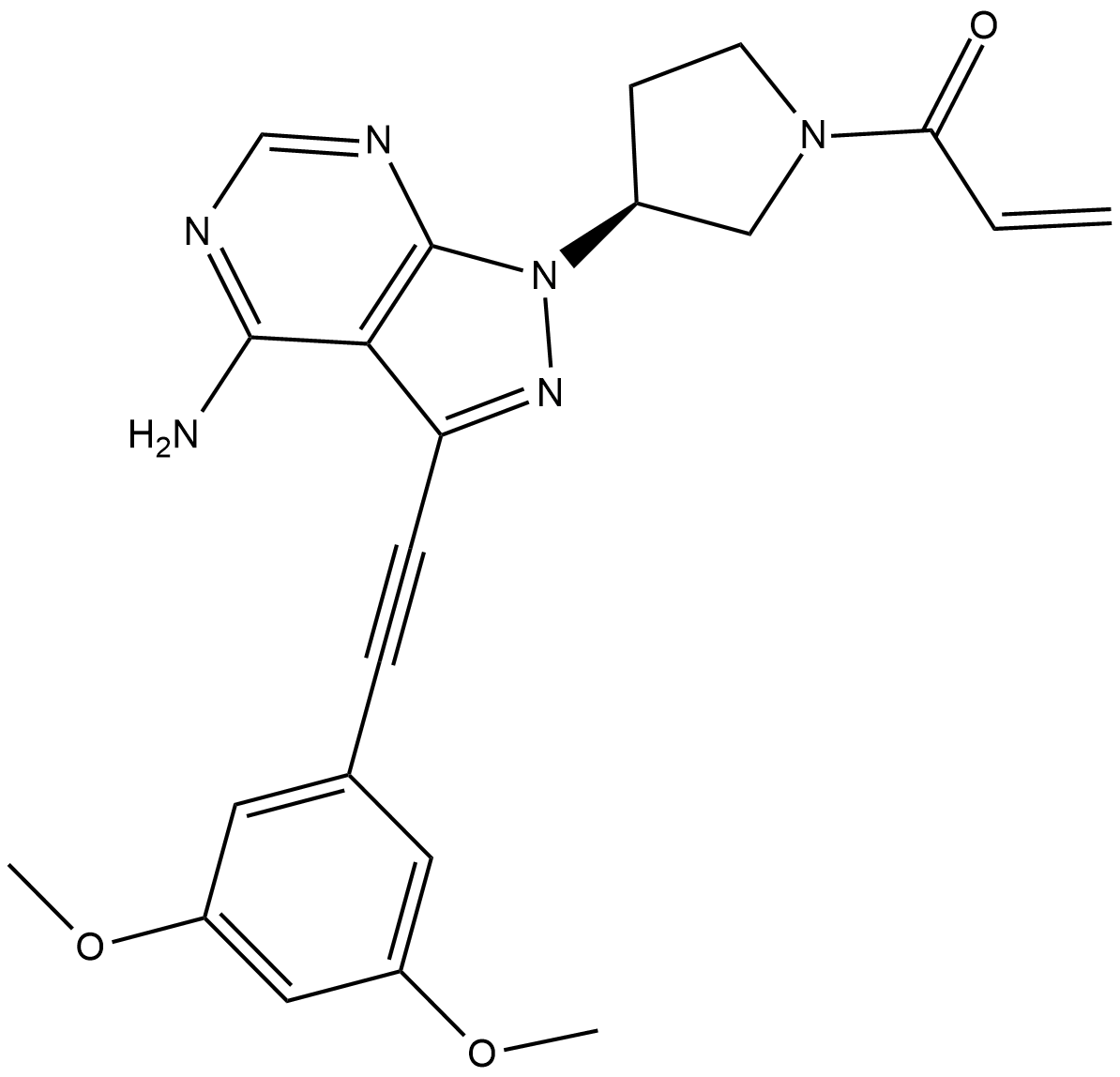
-
GC37771
TG 100572
TG 100572 is a multi-targeted kinase inhibitor which inhibits receptor tyrosine kinases and Src kinases; has IC50s of 2, 7, 2, 16, 13, 5, 0.5, 6, 0.1, 0.4, 1, 0.2 nM for VEGFR1, VEGFR2, FGFR1, FGFR2, PDGFRβ, Fgr, Fyn, Hck, Lck, Lyn, Src, Yes, respectively.
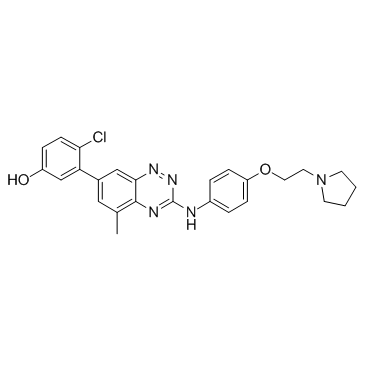
-
GC37772
TG 100572 Hydrochloride
TG 100572 Hydrochloride is a multi-targeted kinase inhibitor which inhibits receptor tyrosine kinases and Src kinases; has IC50s of 2, 7, 2, 16, 13, 5, 0.5, 6, 0.1, 0.4, 1, 0.2 nM for VEGFR1, VEGFR2, FGFR1, FGFR2, PDGFRβ, Fgr, Fyn, Hck, Lck, Lyn, Src, Yes, respectively.

-
GC11622
TG 100801
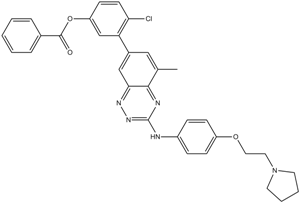
-
GC37773
TG 100801 Hydrochloride
TG 100801 Hydrochloride is a prodrug that generates TG 100572 by de-esterification in development to treat age-related macular degeneration. TG 100572 is a multi-targeted kinase inhibitor which inhibits receptor tyrosine kinases and Src kinases; has IC50s of 2, 7, 2, 16, 13, 5, 0.5, 6, 0.1, 0.4, 1, 0.2 for VEGFR1, VEGFR2, FGFR1, FGFR2, PDGFRβ, Fgr, Fyn, Hck, Lck, Lyn, Src, Yes, respectively.
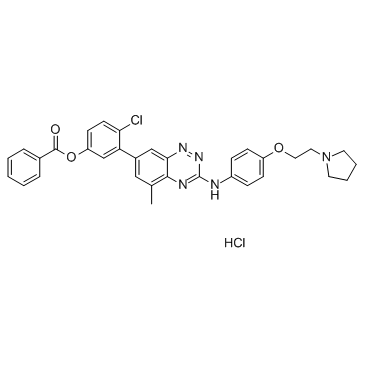
-
GC16732
TSU-68 (SU6668,Orantinib)
TSU-68 (SU6668,Orantinib) (SU6668; TSU-68) is a multi-targeted receptor tyrosine kinase inhibitor with Kis of 2.1 μM, 8 nM and 1.2 μM for Flt-1, PDGFRβ and FGFR1, respectively.
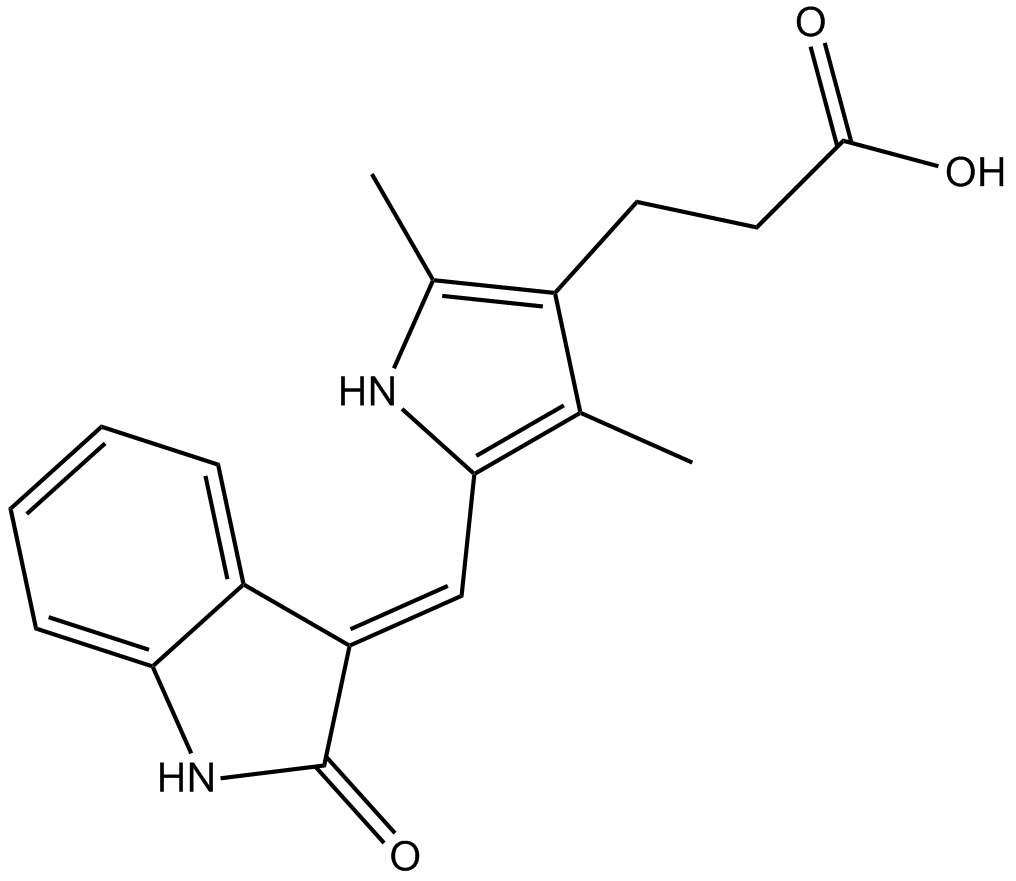
-
GC34026
Tyrosine kinase-IN-1
Tyrosine kinase-IN-1 is a multi-targeted tyrosine kinase inhibitor with IC50s of 4, 20, 4, 2 nM for KDR, Flt-1, FGFR1 and PDGFRα, respectively.

-
GC70122
Vofatamab
Vofatamab (B-701) is a monoclonal antibody (mAb) that targets FGFR3. Vofatamab blocks the activation of both wild-type and mutated receptors. It is being studied for its potential use in metastatic urothelial carcinoma (MUC).

-
GC70125
Vosoritide acetate
Vosoritide (BMN 111) acetate is a natriuretic peptide receptor 2 (NPR2) agonist that can stimulate the proliferation and differentiation of chondrocytes, promoting bone growth.
